April 30, 2019
Prelims Pointers
April 30, 2019
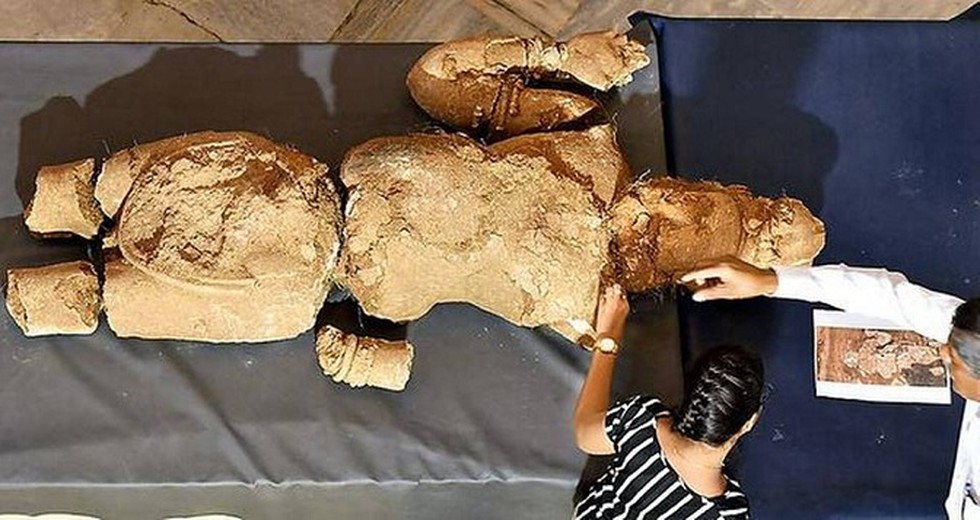
About:
- Location: Archaeologists in Telangana have unearthed a rare life-sized stucco sculpture from a Buddhist site at Phanigiri in Suryapet.
- Features: Archaeologists believe the life-size figurine represents a Bhodhisattva in Jathaka Chakra.
- Size: The stucco sculpture is the biggest till date that has been found in the country. The stucco is about 1.73 metres in height and 35 cm in width.
- Background: The life size stucco Bodhisattva was created Nearly 1,700 years ago by craftsmen at Phanigiri at the peak of Ikshavaku dynasty rule.
Stucco?
- Stucco is a material made of aggregates, a binder, and water. Stucco is applied wet and hardens to a very dense solid.
- Composition: Traditional stucco is made of lime, sand, and water. Modern stucco is made of Portland cement, sand, and water. Lime is added to increase the permeability and workability of modern stucco.
- Application: It is used as a decorative coating for walls and ceilings, and as a sculptural and artistic material in architecture.
Prelims Pointers
April 30, 2019
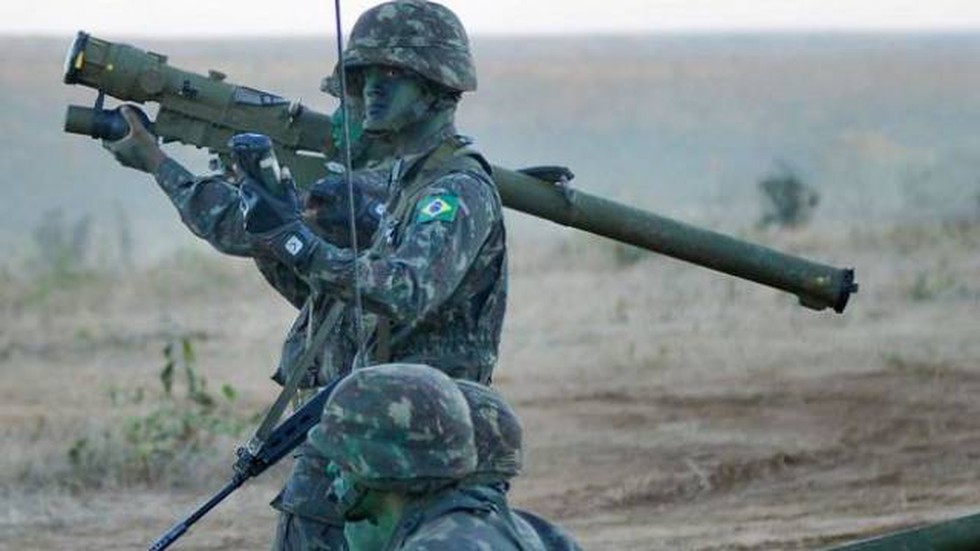
About:
- Earlier this month, the Ministry of Defence sanctioned New emergency Financial powers to the three armed forces.
- Under the latest emergency financial powers, armed forces have been given a free hand to procure critical equipment worth up to ₹300 crore on a priority basis.
- Entirely new systems not in use can also be procured under the new powers.
- Under this route, the Request For Proposal (RFP) for the 2 deals have been issued and negotiations are ongoing. These 2 deals are procuring Spike-LR Anti-Tank Missile from Israel and Igla-S Very Short Range Air Defence Systems (VSHORAD) from Russia.
Man-portable air defence systems (MANPADS)?
- Man-portable air defence systems (MANPADS) are surface-to-air missiles that can be fired by an individual or a small team of people against aircraft. These weapon systems often are described as shoulder-fired anti-aircraft missiles.
- In 2010, union government initiated the tender to procure Very Short-Range Air Defence (VSHORAD) man-portable air defence (MANPAD) missile so as to replace legacy Russian air defence systems with modern missiles.
Prelims Pointers
April 30, 2019
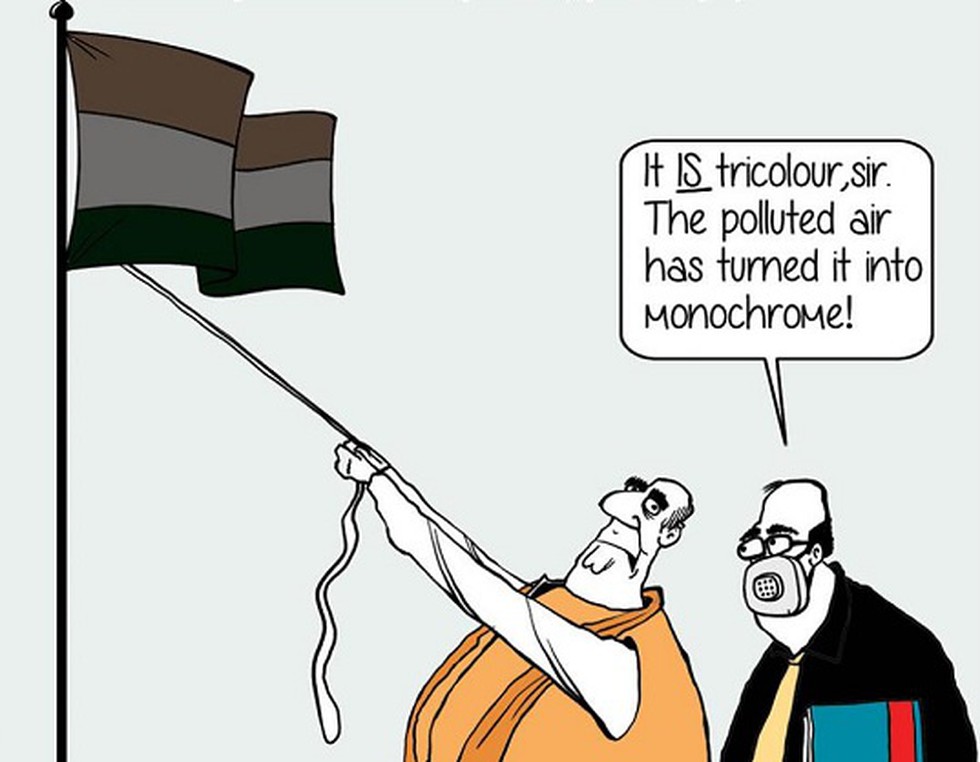
About:
- Composition: The committee will be chaired by the Secretary, Union Environment Ministry. It has among its members the Joint Secretary (Thermal), Ministry of Power; Director-General, The Energy Resources Institute (TERI), and a Professor of IIT-Kanpur.
- HQ: The committee would be headquartered in New Delhi.
National Clean Air Programme (NCAP)?
- Background: The NCAP was unveiled in January 2019.
- Objective: NCAP is a time bound national level strategy for pan India implementation to tackle the increasing air pollution problem across the country in a comprehensive manner.
- Implementation Period: NCAP is a mid-term, five-year action plan with 2019 as the first year.
- Target: The government has set a tentative national level target of 20%–30% reduction of PM 2.5 and PM 10 concentration by 2024 taking 2017 as the base year for the comparison of concentration.
- Coverage: 102 non-attainment cities have been identified for implementing mitigation actions under NCAP. There will be use of the Smart Cities program to launch the NCAP in the 43 smart cities falling in the list of the 102 non-attainment cities.
- Need of programme: The World Health Organisation’s (WHO) database on air pollution over the years has listed Tier I and Tier II Indian cities as some of the most polluted places in the world. In 2018, 14 of the world’s 15 most polluted cities were in India.
Prelims Pointers
April 30, 2019
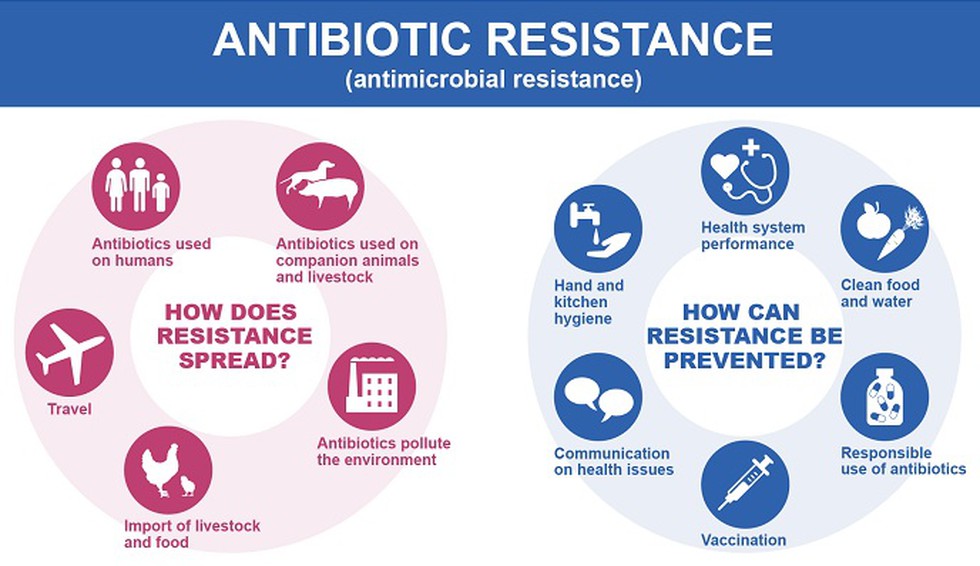
Key Findings of report:
- Drug-resistant diseases could cause 10 million deaths each year by 2050.
- By 2030, antimicrobial resistance could force up to 24 million people into extreme poverty.
- Currently, at least 7,00,000 people die each year due to drug-resistant diseases, including 2,30,000 people who die from multidrug-resistant tuberculosis.
Recommendations made for Countries:
- Prioritise national action plans to scale-up financing and capacity-building efforts,
- Put in place stronger regulatory systems,
- Support awareness programs for prudent use of antimicrobials by professionals in human, animal and plant health and
- invest in research and development for new technologies to combat antimicrobial resistance.
UN Interagency Coordination Group (IACG) on Antimicrobial Resistance?
- Background: In 2016, the Political Declaration of the High-level Meeting on Antimicrobial Resistance (Resolution A/RES/71/3), called for the establishment of the IACG, in consultation with the WHO, the FAO, and the World Organisation for Animal Health (OIE).
- Mandate: To provide practical guidance for approaches needed to ensure sustained effective global action to address antimicrobial resistance.
- Secretariat: The IACG Secretariat is hosted by WHO, with contributions from FAO and OIE.
- Chairmanship: The Group is co-chaired by the UN Deputy Secretary-General and the Director General of the WHO.
Prelims Pointers
April 30, 2019
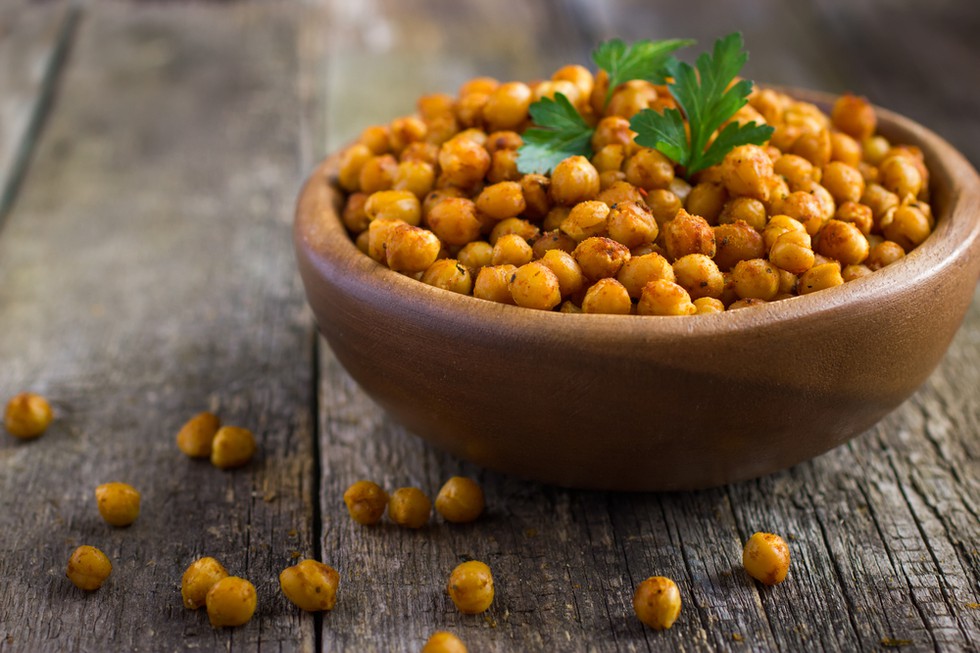
Chickpea:
- Chickpea is a cool season crop. In India, chickpea is generally sown in September-October and harvested in January-February.
- More than 90% of chickpea cultivation area is in South Asia, including India. Chickpea originated in the Mediterranean/south-west Asia and migrated to south Asia.
- Globally, more than 70% yield is lost due to drought and increasing temperatures.
Recent study:
- The study was based on complete genome sequencing of 429 chickpea lines from 45 countries.
- In the study, scientists identified in chickpea four important genes for heat tolerance and three important genes for drought tolerance.
- Application:
- Identification of these climate-resistant genes will help in developing newer chickpea varieties which can tolerate temperatures up to 38°C.
- The identification of other genes with important agromic traits will help in increasing the yield and providing better resistance to pests and diseases.
- Identification of these climate-resistant genes will help in developing newer chickpea varieties which can tolerate temperatures up to 38°C.
International Crops Research Institute for the Semi-Arid Tropics (ICRISAT)?
- Status: An international non-profit organization.
- Established in: 1972.
- HQ: Hyderabad, Telangana.
- Mandate: Undertaking agricultural research for rural development in the semi-arid tropics (SAT) region.
- The semi-arid tropics (SAT) region is characterised by highly variable, low-to-medium rainfall and poor soils, further characterised by lack of irrigation, thus considered to be a less favored area (LFA).
- It performs crop improvement research on the following crops: Chickpea, Pigeonpea, Groundnut, Pearl millet, Sorghum, Finger Millet and Small millets.
Prelims Pointers
April 30, 2019
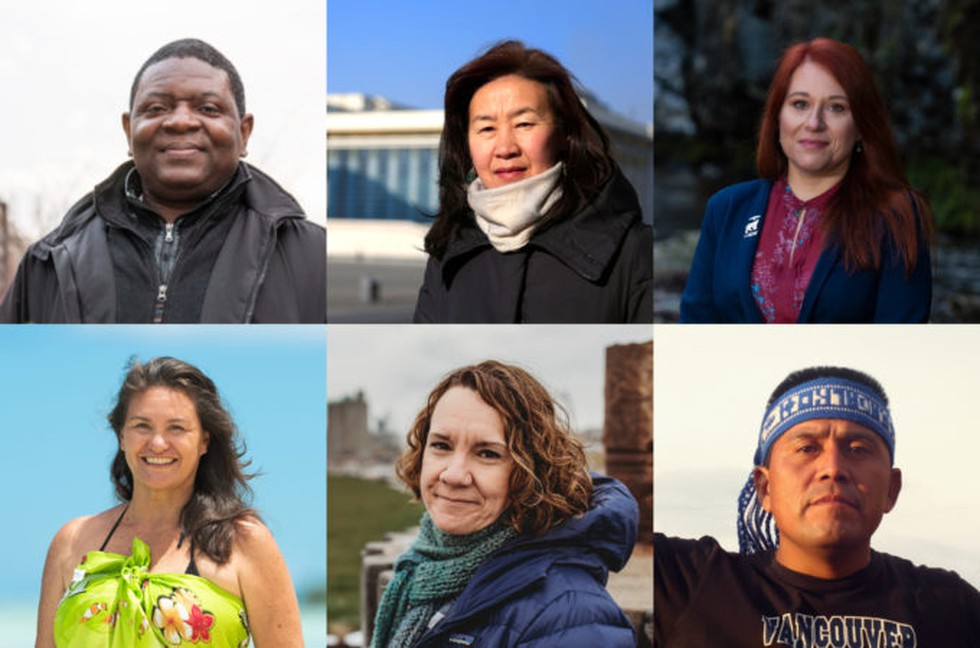
About:
- Objective: To honour those grassroots environmentalists who risk their lives to protect the environment and empower those people who have the most to lose from industrial projects.
- Selection procedure:
- The Prize honours grassroots environmental heroes from the world’s six inhabited continental regions: Africa, Asia, Europe, Islands & Island Nations, North America, and South & Central America.
- Winners are selected from nominations made by environmental organisations and others.
- Generally, the winners are announced every April to coincide with Earth Day.
- The Prize honours grassroots environmental heroes from the world’s six inhabited continental regions: Africa, Asia, Europe, Islands & Island Nations, North America, and South & Central America.
- Established in: 1989.
- Established by: Philanthropists Richard and Rhoda Goldman.
- Awarded annually by: Goldman Environmental Foundation, headquartered in San Francisco, California.
- Cash prize: $200,000.
- Indians to win this award in past: Prafulla Samantara, Medha Patkar, M.C. Mehta, Rasheeda Bi, Champaran Shukla and Ramesh Agrawal.
List of winners of 2019 award:
- Alfred Brownell of Liberia, an environmental lawyer and activist, who stopped the clear-cutting of Liberia’s tropical forests by palm oil plantation developers.
- Linda Garcia of Vancouver, Washington, who rallied local communities to successfully prevent the construction of North America’s largest oil terminal.
- Ana Colovic Lesoska of North Macedonia, whose seven-year campaign helped stop hydroelectric projects from being built in the country’s largest national park.
- Bayarjargal Agvaantseren of Mongolia, who led the fight to create the Tost Tosonbumba Nature Reserve.
- Jacqueline Evans of the Cook Islands, whose work led to the conservation and sustainable management of all of the Cook Islands’ ocean territory and creation of 15 marine protected areas.
- Alberto Curamil of Chile, a jailed indigenous activist who had protested several hydroelectric projects in the country.
Prelims Pointers
April 30, 2019
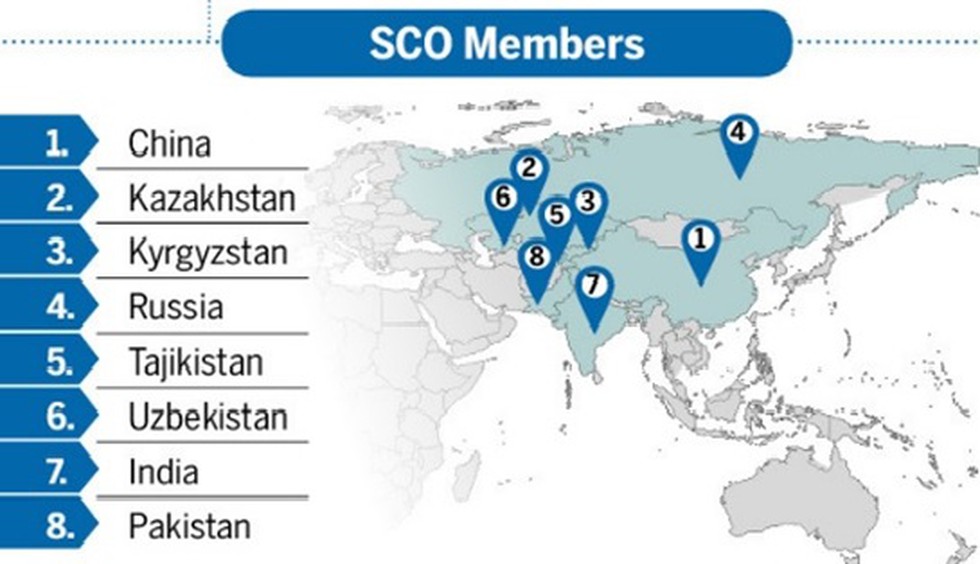
About:
- What is it? The SCO is a permanent intergovernmental international organisation. It is a Eurasian political, economic, and security alliance and has been the primary security pillar of the region.
- History: It was established in 2001. It was preceded by the Shanghai Five mechanism.
- The Heads of State Council (HSC) is the supreme decision-making body in the SCO. It meets once a year and adopts decisions and guidelines on all important matters of the organisation.
- The organisation has two permanent bodies:
- the SCO Secretariat based in Beijing.
- the Executive Committee of the Regional Anti-Terrorist Structure (RATS) based in Tashkent.
- the SCO Secretariat based in Beijing.
- Membership:
- Eight member states: India, Kazakhstan, China, Kyrgyzstan, Pakistan, Russia, Tajikistan, and Uzbekistan.
- Four observer states: Afghanistan, Belarus, Iran and Mongolia.
- Eight member states: India, Kazakhstan, China, Kyrgyzstan, Pakistan, Russia, Tajikistan, and Uzbekistan.
Prelims Pointers
April 30, 2019
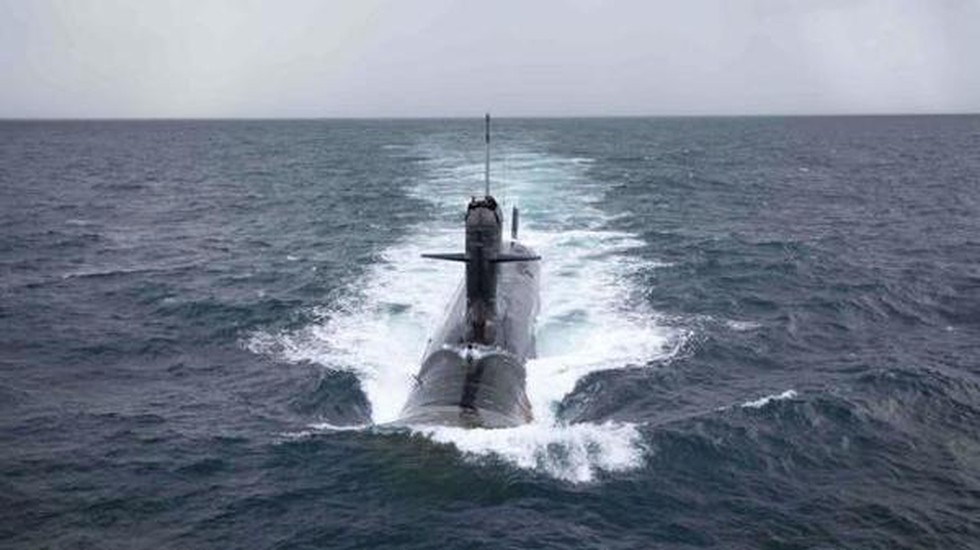
About:
- Features: These ASWSWCs are designed for a deep displacement of 750 tons, speed of 25 knots. These warships will conform to latest Marine Pollution Standards of the International Maritime Organization (IMO) and Safety of Life at Sea (SOLAS).
- Role: These are capable of full-scale sub surface surveillance of coastal waters, SAU and Coordinated ASW operations with Aircraft. In addition, the vessels shall have the capability to interdict/ destroy sub surface targets in coastal waters.
Garden Reach Shipbuilders & Engineers Ltd (GRSE)?
- Garden Reach Shipbuilders & Engineers Ltd (GRSE), is one of India's leading shipyards. It builds and repairs commercial and naval vessels.
- Location: It is located in Kolkata, West Bengal on the eastern bank of the Hooghly River.
- Establishment: It was Founded in 1884 as a small privately owned company. The company was nationalised by the Government of India in 1960.
- Status:
- It is a government of India Undertaking under Ministry of Defence.
- It was awarded the Miniratna status, with accompanying financial and operational autonomy in 2006.
- Key highlights: It built India’s first indigenous warship–the INS Ajay, in the year 1961. In March 2019, GRSE became the "first Indian shipyard" to build and deliver 100 warships.
- Current projects being handled by it: The GRSE is currently handling major projects to make three Stealth Frigates for Indian Navy under P17A Project, ASW Corvettes for Indian Navy, LCUs for Indian Navy, four Survey Vessels (Large) for Indian Navy, FPVs for Indian Coast Guard, etc.
Prelims Pointers
April 30, 2019
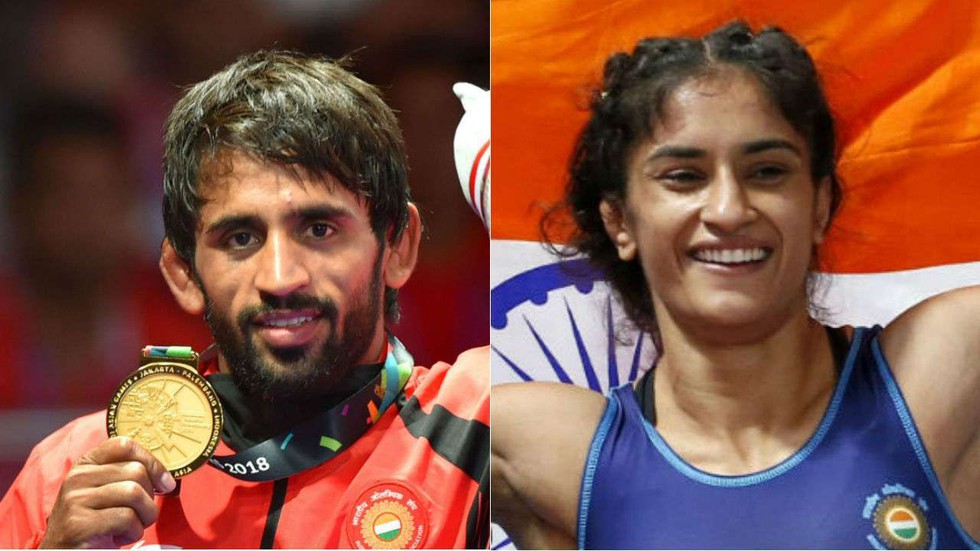
About:
- Full name: Rajiv Gandhi Khel Ratna Award in Sports and Games.
- Objective of the award: To recognize the spectacular and most outstanding performance in the field of sports by a sportsperson over a period of four years at international level.
- Selection committee: The Award will be decided by a Selection Committee constituted by the Government of India as under with a chairperson to be nominated by the Ministry of Youth Affairs & Sports.
- Number of Rajiv Gandhi Khel Ratna award to be given in a year: There will be only one award every year to be given to an individual sportsperson. This condition will be relaxed only in exceptional circumstances.
- Award ceremony: The Awards will be conferred in a ceremony by the President of India, ordinarily on 29th August, birth anniversary of Late Major Dhyan Chand. However, during the years when Olympic Games, Commonwealth and Asian Games are held, the date may change.
- Cash prize: The award will consist of a cash amount of Rs. 7.5 lakh and one medal to each sportsperson.
- No Award will be made for a second time to the same person.
- The award may be given posthumously if such an occasion arises.
- Bajrang Punia recently won a gold medal at the Asian Championship in Xi'an, China by in the men's 65kg freestyle event. Last year he won the gold medal at the Jakarta Asian Games too.
- In 2018, Vinesh Phogat became the first Indian woman to win a gold medal at the Asian Games.
Prelims Pointers
April 30, 2019
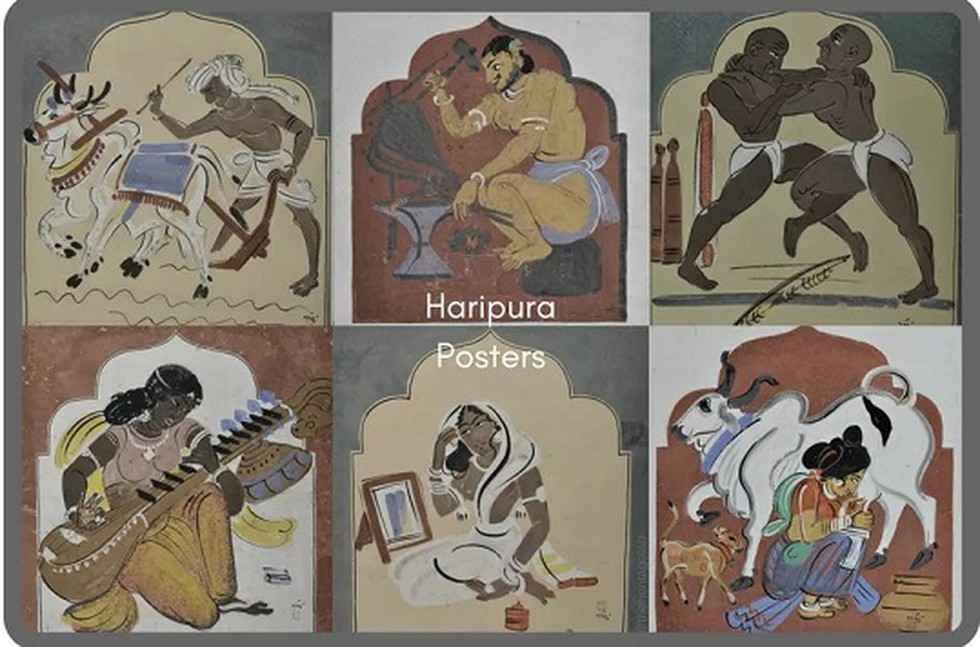
About:
- What is it? The Venice Biennale is an Art exhibition which focuses on contemporary art, and also includes events for art, contemporary dance, architecture, cinema and theatre. It is one of the biggest art events in the world.
- Organized by: Biennale Foundation.
- When held: It’s a Biennial event i.e. every two years.
- Venue: Venice, Italy.
- Duration of the 58th Venice Biennale: It will begin on May 11 this year and will continue till November 24.
- Theme at the Biennale this year: 'Our Time for a Future Caring'.
India’s participation:
- This will be the second time India will have a pavilion of its own at Venice Biennale. The last time was eight years back.
- 16 of the 400 Haripura posters will go up on the walls of the India pavilion.
- In 1938, Mahatma Gandhi commissioned Indian modern artist Nandalal Bose to create paintings portraying different aspects of Indian life to be displayed at the Indian National Congress' session in Haripura, Gujarat.
April 29, 2019
Prelims Pointers
April 29, 2019
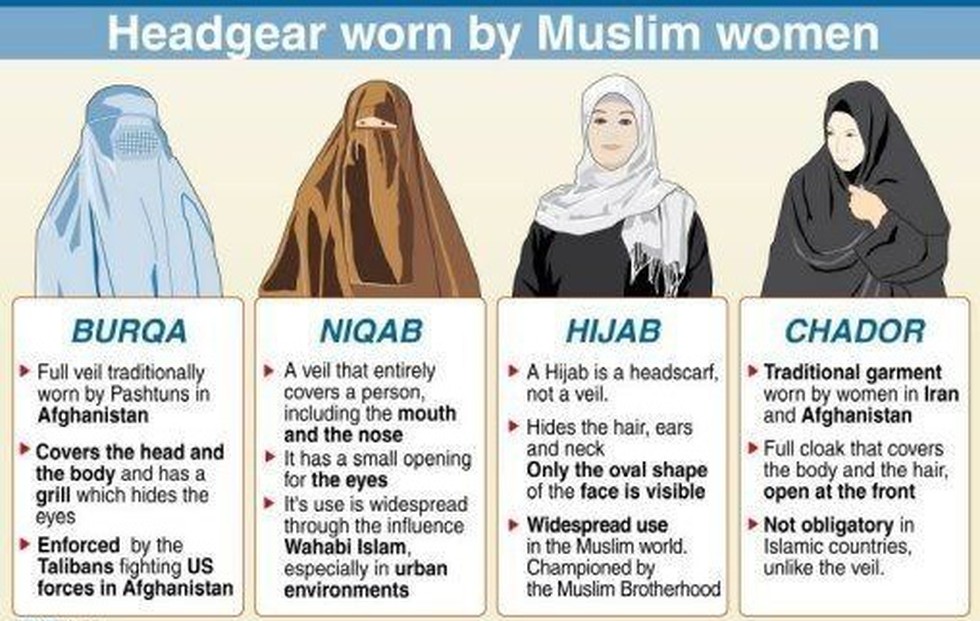
About:
- The President used his emergency powers to ban any form of face covering in public. The order which came into immediate effect said any garment or item which obstructs the identification of a person’s face would be barred.
- It follows Easter Sunday attacks in which more than 250 people were killed. The blasts took place across eight locations, including three prominent churches and three hotels in the island nation.
- Some Muslim organisations had also come forward and suggested a ban on burqa to help stabilize the security situation. Local Muslim clerics urged their women not to cover their faces amid escalating fears of a backlash after the blasts.
- Muslims account for 10 per cent population of Sri Lanka. Most Sri Lankan Muslims practice a liberal form of the religion, with only a small percentage of women wearing a full face veil known as niqab.
Prelims Pointers
April 29, 2019

About:
- The bank cited high bad loans from agricultural advances in the branches of these zones for the decision.
- According to the bank, the present condition of agriculture loans is pathetic, wherein gross NPAs under agriculture stood at 18.36%.
- Among the eight zones, Aurangabad has the highest percentage of NPAs — almost 25% of advances — followed by Bhopal (21.4%), Solapur (19.1%), and Akola (16.5%).
- Advances to the agricultural sector come under Priority Sector Lending (PSL).
Priority Sector Lending (Agriculture)?
- Priority Sector includes the following categories: (i) Agriculture, (ii) Micro, Small and Medium Enterprises, (iii) Export Credit, (iv) Education, (v) Housing, (vi) Social Infrastructure, (vii) Renewable Energy and (viii) Others.
- Targets for Domestic scheduled commercial banks (excluding RRBs and SFBs) and Foreign banks with 20 branches and above (for Agriculture):
- 18 % of ANBC or Credit Equivalent Amount of Off-Balance Sheet Exposure, whichever is higher.
- Within the 18 %, a target of 8 % of ANBC or Credit Equivalent Amount of Off-Balance Sheet Exposure, whichever is higher is prescribed for Small and Marginal Farmers.
- Targets for Foreign banks with less than 20 branches (for Agriculture): Not applicable.
- Categories under ‘Agriculture’: The activities covered under Agriculture are classified under three sub-categories viz. Farm credit, Agriculture infrastructure and Ancillary activities.
Prelims Pointers
April 29, 2019

About:
- Growth Regions: Ishad is a local mango variety from Ankola in Uttara Kannada district, Karnataka.
- Varieties: The mango has two variants — Kari Ishad, which has thin skin, more pulp and is sweeter, and Bili Ishad, which has thick skin and has less pulp and sweetness.
- Harvesting season: The mango is harvested from mid-May.
- Demand of Pulp: The mango has a short shelf life of not more than two or three days. But its pulp lasts more than a year. The pulp of Ishad Mango has been extracted for over a century for making value-added products.
Alphonso Mango?
- In October 2018, Alphonso Mango from Ratnagiri, Sindhudurg, Palghar, Thane and Raigad districts of Maharashtra, was registered as Geographical Indication (GI).
Mission for Integrated Development of Horticulture (MIDH)?
- Type of scheme: A Centrally Sponsored Scheme.
- Background: It is being implemented w.e.f. 2014-15.
- Implemented by: The Ministry of Agriculture & Farmers Welfare.
- Crops/Fruits covered: The mission objective is to ensure holistic growth of the horticulture sector covering fruits (including Mango), vegetables, root and tuber crops, mushrooms, spices, flowers, aromatic plants, coconut, cashew, cocoa and bamboo.
- States covered: All states and UTs are covered under MIDH.
- Features: Under MIDH, credit linked assistance is provided for establishment of Cold Storage, Ripening Chambers and Reefer transport vehicles for perishable horticulture crops including Mango. Funds under MIDH are allocated to States on the basis of Annual Action Plans.
Prelims Pointers
April 29, 2019
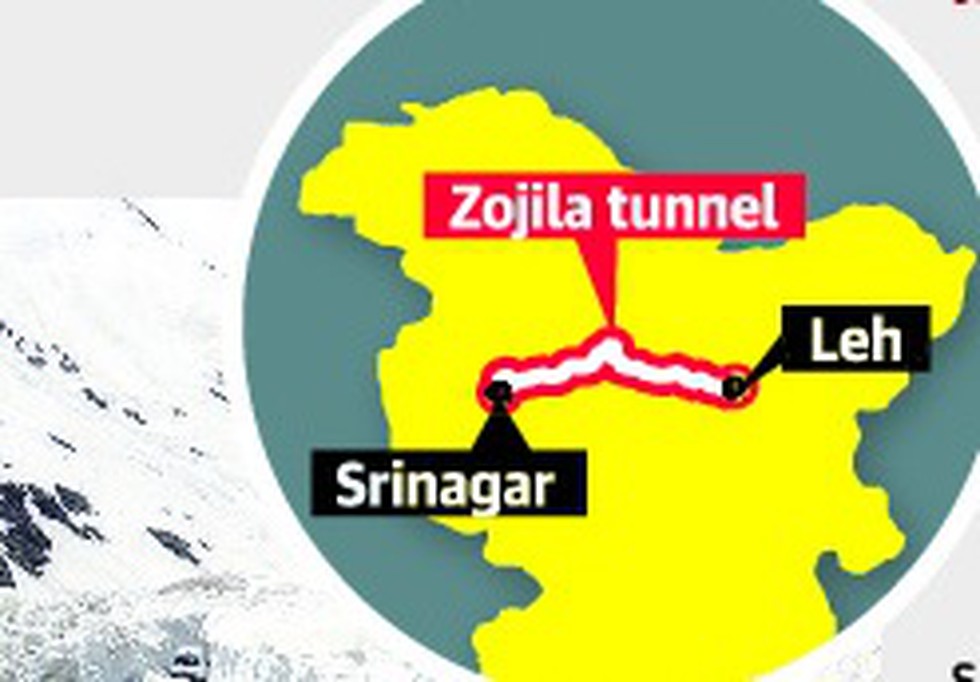
About:
- Zojila is a pass connecting the Kashmir Valley with the cold Indus valley desert in Ladakh region through the 434-km strategic Srinagar-Leh National Highway.
- It runs at an elevation of approximately 3,528 metres (11,575 ft), and is the second highest pass on the Srinagar-Leh National Highway after Fotu La.
- It is often closed during winter. The Beacon Force unit of the Border Roads Organisation (BRO) is responsible for its clearing and maintenance during Winter.
Zojila Tunnel?
- In January 2018, Union Cabinet approved the construction of 2-lane bi-directional Zojila tunnel with parallel escape tunnel in J&K.
- Project Components:
- Main line: 14 km bi-directional single tube tunnel.
- Parallel Engress tunnel: 14 km-long tube excluding entry points.
- Project Duration: 7 years.
- Project Cost: 6,800 crore.
- Implementing Agency: Ministry of Road Transport & Highways (MoRT&H) through National Highways & Infrastructure Development Corporation Limited (NHIDCL).
- Significance:
- Strategic: Alongwith other ongoing projects like 6.5 km long Z-Morh tunnel at Gagangir, it would ensure all whether connectivity to strategically important Leh region which at the moment is limited to at best 6 months because of snow on the passes.
- Economic: The project would lead to enormous boost in employment as local businesses get linked to National market. It will also boost tourism by linking the beautiful region to rest of India.
Prelims Pointers
April 29, 2019

Recent development:
- After the Belt and Road Forum (BRF) which recently concluded in Beijing, the Chinese foreign ministry website has not listed the BCIM as a project covered by the BRI.
- Citing “sovereignty” concerns, India, for the second time, has not officially participated in the BRF, as CPEC—a flagship of the BRI—passes through Pakistan occupied Kashmir (PoK).
- Now, South Asia is being covered by three major undertakings under BRI –
- China-Myanmar Economic Corridor (CMEC),
- Nepal-China Trans-Himalayan Multi-dimensional Connectivity Network, including Nepal-China cross-border railway, and
- China Pakistan Economic Corridor (CPEC).
- China-Myanmar Economic Corridor (CMEC),
Bangladesh- China- India- Myanmar (BCIM) Economic corridor?
- Countries covered: BCIM corridor is name of the proposed 2,800-km long economic corridor (EC) which will pass through Bangladesh, China, India and Myanmar.
- Proposed Route: The 2800 km long BCIM corridor proposes to link Kunming in China’s Yunnan province with Kolkata, passing though nodes such as Mandalay in Myanmar and Dhaka in Bangladesh before heading to Kolkata.
- Features: Under this a ‘multi-modal transport network’ with accompanying infrastructure would be developed. But it goes beyond physical connectivity by providing digital connectivity, trade facilitation and lowering barriers for seamless movement of goods.
- Timeline:
- The issue of promoting connectivity between the underdeveloped south-western region of China and Myanmar, India and Bangladesh has been under discussion since the early 1990s in a Track-II process known as the 'Kunming Initiative'.
- This was formalised into the BCIM Forum for Regional Cooperation in 1999.
- The initiative saw progress between 2013 and 2015, with all four members establishing a Joint Study Group (JSG) that held three annual meetings during this time.
- However, there has been a lull in its progress, mainly due to lack of trust between India and China as seen by recent Dokalam crisis, opposition to membership of nuclear export control regimes such as NSG etc.
Prelims Pointers
April 29, 2019
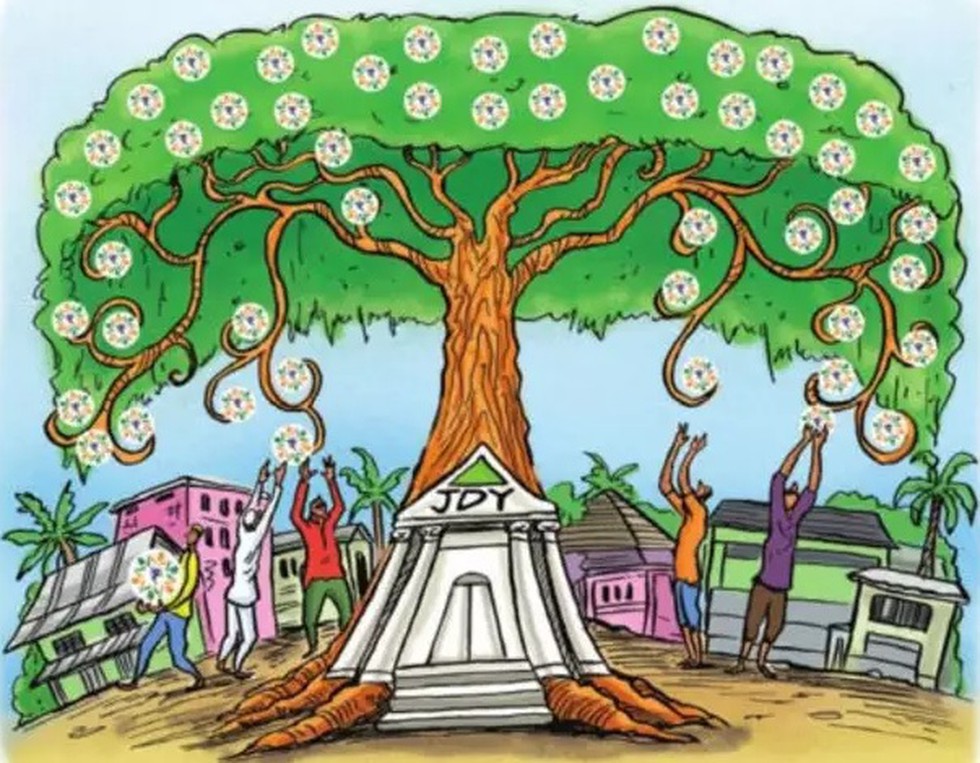
About:
- Origin: A National Mission on Financial Inclusion named as Pradhan Mantri Jan Dhan Yojana (PMJDY) was formally launched in August, 2014 at National level.
- Objective: To promote financial inclusion with the main objective of covering all households with at least one bank account per household across the country.
- Components of PMJDY:
- Access to Banking: Universal access to banking facilities for all households across the country through a bank branch or fixed point Business Correspondent (BC).
- Opening Account: To cover all households with at least one Basic Bank Account with RuPay Debit card having inbuilt accident insurance cover of Rs.1 lakh.
- Overdraft facility: An overdraft facility upto Rs.5000/- after satisfactory operation in the account for 6 months.
- Life cover: A Life Cover of Rs. 30,000/- to those beneficiaries who open their accounts for the first time from 08.2014 to 31.01.2015.
- Financial Literacy: Financial literacy programme which aims to take financial literacy upto village level.
- Expanding DBT: Expansion of Direct Benefit Transfer (DBT) under various Government Schemes through bank accounts of the beneficiaries.
- Micro –insurance: Providing micro –insurance to the people.
- Pension: Providing Unorganised sector Pension schemes through the Business Correspondents.
- Access to Banking: Universal access to banking facilities for all households across the country through a bank branch or fixed point Business Correspondent (BC).
Complimentary schemes to take forward the Jan Dhan mission:
- Jan Dhan to Jan Suraksha: To create a universal social security system for all Indians, three Social Security Schemes were launched in the Insurance and Pension sectors in 2015 namely (1) Pradhan Mantri Suraksha Bima Yojna (PMSBY), (2) Pradhan Mantri Jeevan Jyoti Bima Yojana (PMJJBY) and (3) the Atal Pension Yojana (APY).
- Mudra yojana: The entire network created by the Jan Dhan Yojana (PMJDY) has also enabled implementation of the Micro Units Development and Refinance Agency Bank (MUDRA) Yojana.
- JAM Trinity:
- PMJDY has unleashed the “JAM” revolution which has brought together financial inclusion (PMJDY), biometric identification (Aadhaar) and mobile telecommunications.
- Thus within reach of the country is what might be called the 1 billion – 1 billion – 1 billion vision. That is 1 billion unique Aadhaar numbers linked to 1 billion bank accounts and 1 billion mobile phones.
Prelims Pointers
April 29, 2019

Key Findings of the report:
- Social media platforms like Facebook and WhatsApp are emerging as new public square for criminal deception with Social media fraud increasing by 43% in 2018.
- Cybercriminals are increasingly relying on Facebook, Instagram, WhatsApp and other legitimate social media and messaging platforms to communicate with each other and sell stolen identities, credit card numbers and other ill-gotten gains.
- This trend will continue in 2019 given the ease of use, absence of fees and other benefits of these platforms.
- Fraud in the mobile channel has grown significantly over the past several years, with 70% of artifice originating in the mobile channel in 2018. In particular, fraud from mobile apps increased 680% between 2015 and 2018.
Measures taken by Government for addressing issues related to cyber security:
- National Cyber Security policy (2013) has been formulated.
- National Cyber Security Coordinator (NCSC) under National Security Council Secretariat (NSCS) coordinates with different agencies at the national level for cyber security matters.
- Information Technology Act, 2000 was enacted to provide legal recognition for electronic communication, electronic commerce and cyber-crimes etc. IT Act has deterrent provisions to deal with cyber threats and cyber-attacks.
- The Indian Computer Emergency Response Team (CERT-In) issues alerts and advisories regarding latest cyber threats and countermeasures on regular basis.
- National Critical Information Infrastructure Protection Centre (NCIIPC) has been established for protection of critical information infrastructure in the country.
- Cyber Swachhta Kendra (Botnet Cleaning and Malware Analysis Centre) has been launched for detection of malicious programs and provide free tools to remove the same.
- National Cyber Coordination Centre (NCCC) has set up to generate necessary situational awareness of existing and potential cyber security threats and enable timely information sharing for proactive, preventive and protective actions by individual entities.
- Under Cyber Crime Prevention for Women and Children (CCPWC) Scheme, Government of India has released grants to States/UTs for setting up of a Cyber Forensic cum Training Laboratory and organizing capacity building programme on cyber awareness and cyber crime investigation.
- A Division has been established under the Ministry of Home Affairs to deal with Cyber and Information Security.
Prelims Pointers
April 29, 2019
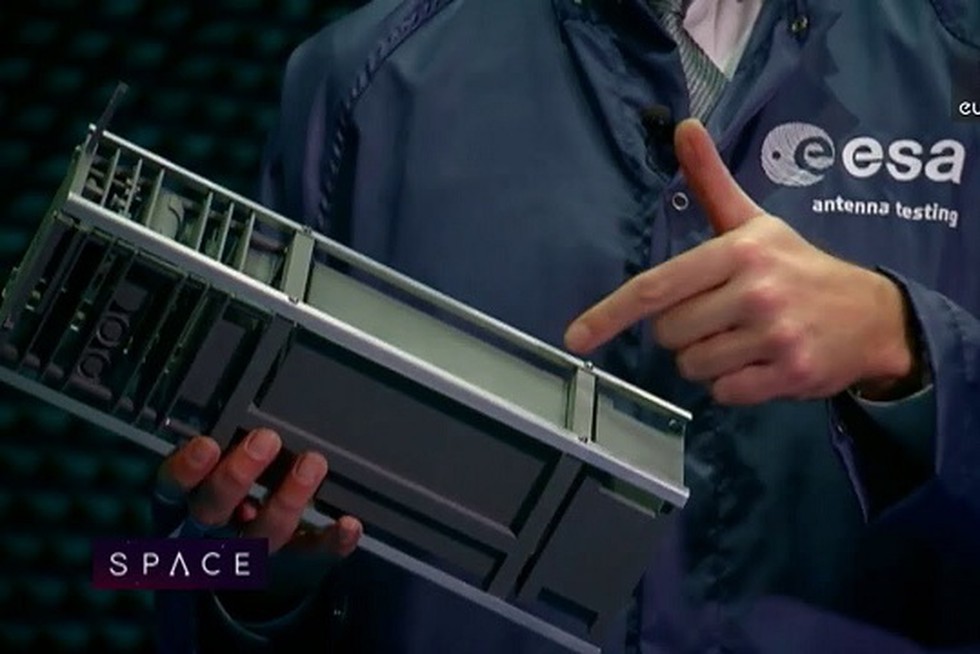
About:
- Size: Shoebox satellites is name for tiny, inexpensive satellites launched into orbit. They are called shoebox because of their size as they weigh less than 10 kg.
- Application: These satellites are expected to see an explosion in demand in the next few years. The expected demand is for services ranging from high-speed internet for aircraft to universities conducting experiments.
- Global scenario: Apart from the Chinese, American scientists have been developing such satellites. One of these, called RainCube (Radar in a CubeSat), sponsored by NASA, was launched into low-Earth orbit from the International Space Station in July 2018.
Prelims Pointers
April 29, 2019
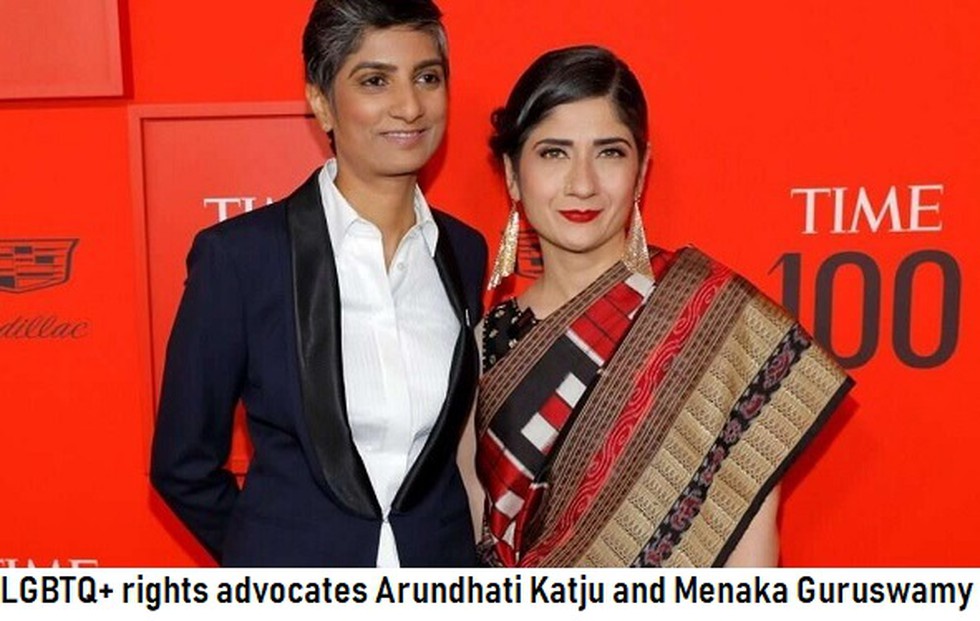
2019 List:
- US President Donald Trump, China President Xi Jinping, Pakistan Prime Minister Imran Khan, Pope Francis, golfer Tiger Woods and Facebook founder Mark Zuckerberg are among the prominent names to have featured in the TIME's list.
- Mukesh Ambani is the Chairman of Reliance Industries.
- Menaka Guruswamy and Arundhati Katju are two Indian women lawyers who spearheaded the legal challenge to strike down Section 377 of Indian Penal Code (IPC).
- In September 2018, the Supreme Court partly struck down Section 377 in a unanimous decision, thus overturning a colonial-era ban imposed on consensual gay sex and affirming human rights of LGBTQ (lesbian, gay, bisexual, transgender, queer) community.
- Time 100 is an annual list of the 100 most influential people in the world assembled by the American news magazine Time.
- The entrants are recognized for changing the world, regardless of the consequences of their actions.
Prelims Pointers
April 29, 2019
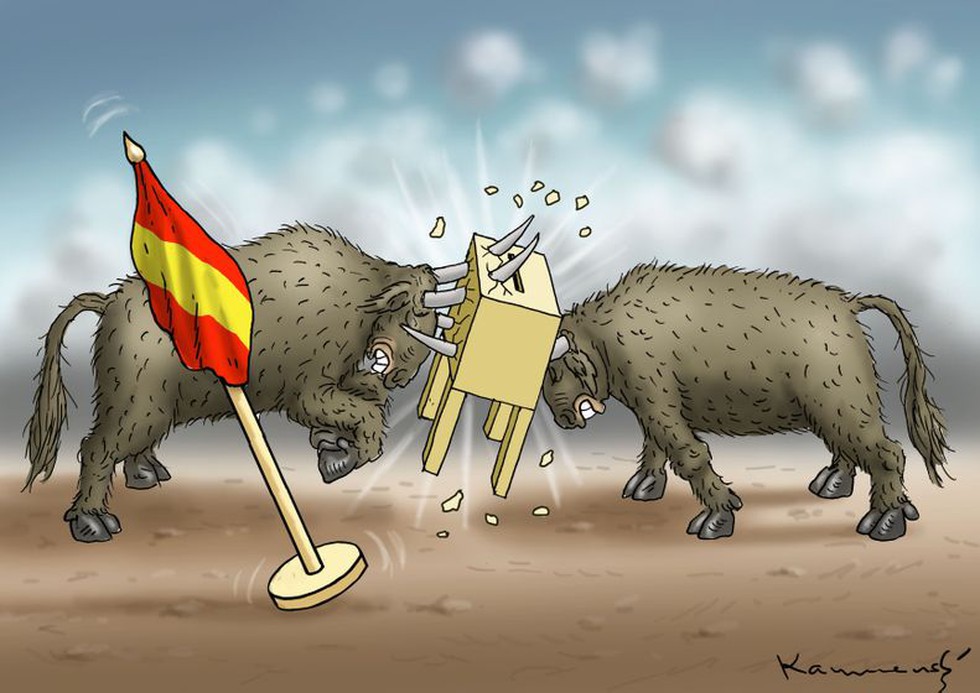
About:
- General election: In a parliamentary democracy, a general election is held once every few years in which every adult can vote to determine the people who will represent them in parliament.
- Snap election:
- It refers to a swift and often unforeseen decision by the party in power to initiate a general election sooner than the fixed-term deadline.
- Generally speaking, the Prime Minister under such systems does not have the legal power to call an election, but rather must request the election be called by the head of state, which by convention is granted.
- It refers to a swift and often unforeseen decision by the party in power to initiate a general election sooner than the fixed-term deadline.
- Reason behind snap elections:
- It is used as a tactic by party in power to exploit the opposition’s perceived weakness in any given political moment and to bolster their majority in parliament.
- However, snap elections can also backfire on the incumbent and resulting in a decreased majority.
- It is used as a tactic by party in power to exploit the opposition’s perceived weakness in any given political moment and to bolster their majority in parliament.
- Snap vs Recall Election: It differs from a recall election in that it is initiated by politicians (usually the head of government or ruling party) rather than voters.
- Snap vs by-election: It differs from a by-election in that the winners will serve an entire term as opposed to the remainder of an already established term.
April 28, 2019
Prelims Pointers
April 28, 2019
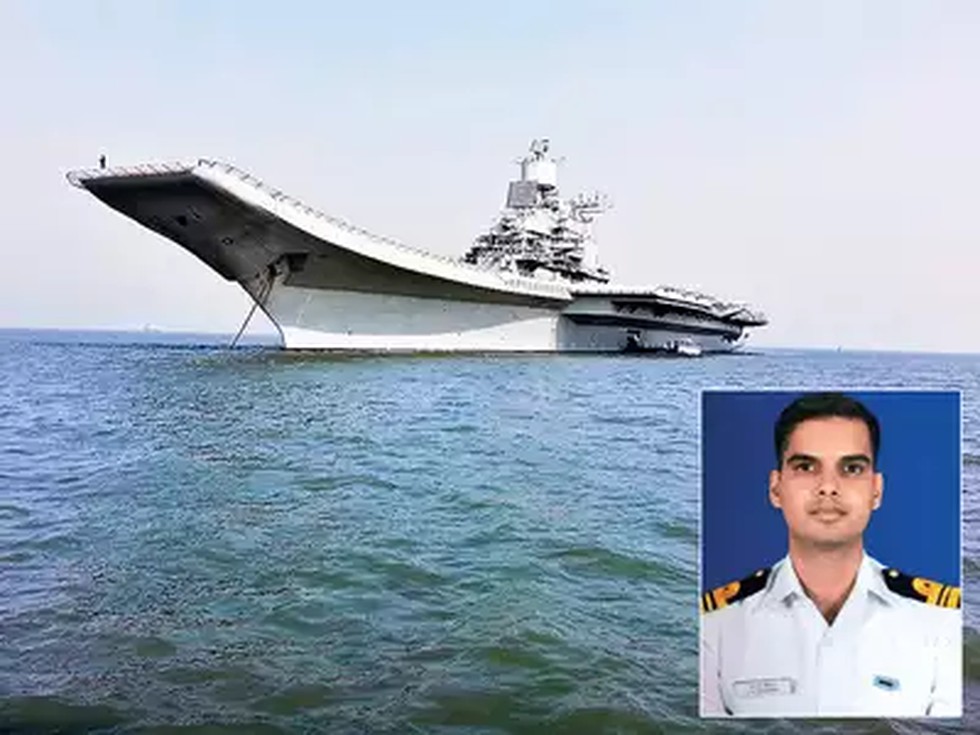
About:
- What is it? INS Vikramaditya is a modified Kiev-class aircraft carrier.
- Name: She has been renamed in honour of Vikramaditya, a legendary emperor of Ujjain, India.
- History:
- Originally built as Baku and commissioned in 1987, the carrier served with the Soviet Navy and later with the Russian Navy (as Admiral Gorshkov) before being decommissioned in 1996.
- The carrier was purchased by India in 2004.
- It entered into service with the Indian Navy in 2013 and was formally dedicated it to the nation in 2014 by Prime Minister of India.
- Originally built as Baku and commissioned in 1987, the carrier served with the Soviet Navy and later with the Russian Navy (as Admiral Gorshkov) before being decommissioned in 1996.
Aircraft carriers in India: An Overview
- In late 2018, Navy Chief Admiral Sunil Lanba said Navy Headquarters was working on a second Indigenous Aircraft Carrier or IAC-2, which would give India a fleet of three aircraft carriers. India currently has only one aircraft carrier, INS Vikramaditya.
- List of aircraft carriers of India: Service record
- INS Vikramaditya: 45,400 tonnes, modified Kiev-class carrier, formerly Admiral Gorshkov. In service since 2013.
- INS Vikrant: 19,500 tonnes, Majestic-class carrier, formerly the HMS Hercules. In service from 1961 to 1997. Used as a museum until 2012, and scrapped in 2014-15.
- INS Viraat: 28,700 tonnes, Centaur-class carrier, formerly HMS Hermes. In service from 1987 to 2016. Decommissioned on March 6, 2017.
- INS Vikrant (IAC-1): 44,000 tonnes, Vikrant-class carrier. Under construction at Cochin Shipyard, sea trials scheduled in 2020.
- Need of Aircraft Carriers:
- The ability of a country to project military force away from its shores is largely dependent on the aircraft carriers.
- Shore-based aircraft have limited reach in India’s vast maritime area of interest, and can provide limited air defence to the fleet only when operating close to the coast, a rarity in naval concepts of operations.
- In the maritime strike role too, shore-based aircraft have limited range with inherent time delays, considering the distance to targets at sea. The surety of support from a shore-based fighter is intrinsically linked to the unpredictable factor of weather.
- Carrier Battle Groups (CBGs):
- Given that one of the carriers is in refit or maintenance, the Maritime Capability Perspective Plan of the Navy envisages a force level of three aircraft carriers, to ensure development of a capability to operate two Carrier Battle Groups (CBGs) at any given time.
- CBGs are large task formations centred around a carrier, and provide unmatched flexibility, reach and sustainability. These are primary assets for the projection of power, and provide credible deterrence through visibility.
Prelims Pointers
April 28, 2019
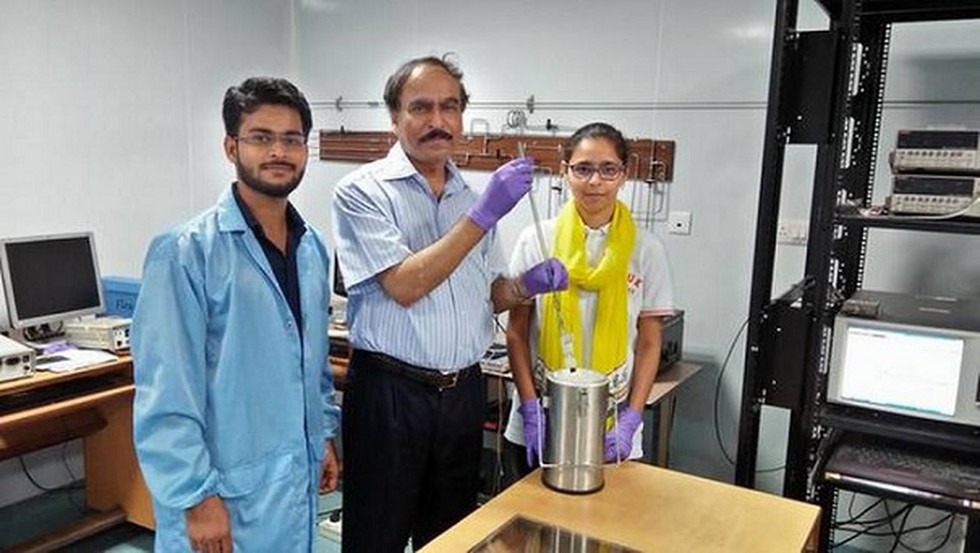
About:
- Material used: This ultrasensitive quantum thermometer has been developed using graphene quantum dots (GQDs).
- Features:
- The thermometer has high sensitivity when measuring different temperatures and can measure very minute (micro Kelvin) changes in temperature.
- The thermometer has extreme quick response time of just about 300 milliseconds to register a change in temperature from 27 degree C to –196 degree C.
- The thermometer has high sensitivity when measuring different temperatures and can measure very minute (micro Kelvin) changes in temperature.
- Applications: The device can find widespread applications in cryogenic temperature sensing. It will be useful in the pharmaceutical industry, healthcare to measure the incubation temperature of biological cells and molecules and the automobile industry to measure the ignition temperature within the engine.
Graphene Quantum Dots (GQDs)?
- Quantum dots (QDs), sometimes referred to as ‘artificial atoms’, are semiconductor nanoparticles or nanocrystals, usually in the range of 2-10 nanometers (10-50 atoms) in size. Their small size and high surface-to-volume ratio affects their optical and electronic properties and makes them different from larger particles made of the same materials.
- The term Graphene quantum dots (GQDs) refers to miniscule fragments, limited in size, or domains, of single-layer to tens of layers of graphene.
- While graphene usually does not have a bandgap - which is a problem for many applications - graphene quantum dots do contain a bandgap due to quantum confinement and edge effects, and that bandgap modifies graphene's carrier behaviors.
- GQDs often possess properties like low toxicity, stable photoluminescence, chemical stability and pronounced quantum confinement effect, which make them attractive for biological, opto-electronics, energy and environmental applications.
Prelims Pointers
April 28, 2019
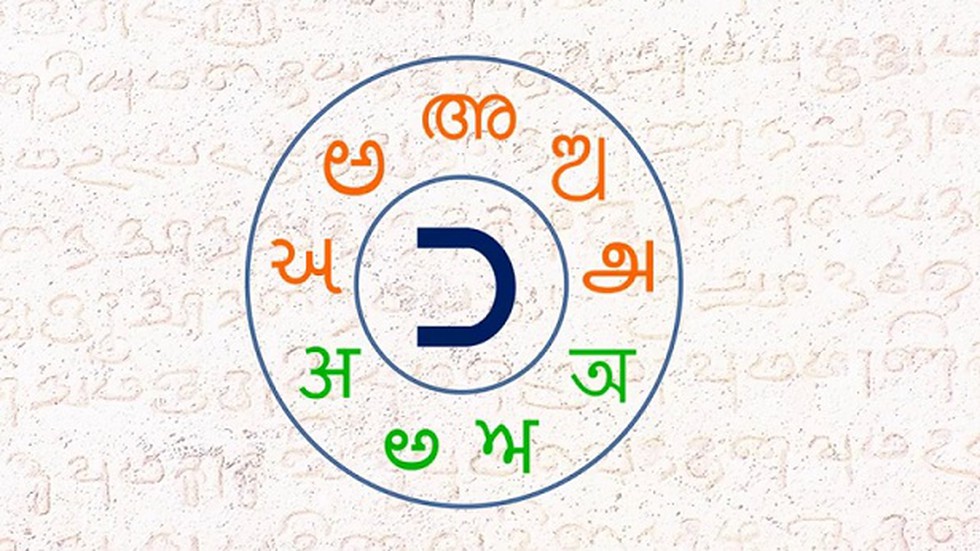
About:
- What is it? Bharati is a unified script for nine Indian languages which is being proposed as a common script for India.
- Scripts included: The scripts that have been integrated include Devnagari, Bengali, Gurmukhi, Gujarati, Oriya, Telugu, Kannada, Malayalam and Tamil. English and Urdu have not been integrated so far as they have a very different phonetic organisation.
- Developers: It has been developed by team of researchers from IIT-Madras headed by Professor V. Srinivasa Chakravarthy.
- Need of Bharti:
- The Roman script is used as a common script for many European languages (English, French, German, Italian etc.), which facilitates communication across nations that speak and write those languages.
- Likewise a common script for the entire country is hoped to bring down many communication barriers in India.
- The Roman script is used as a common script for many European languages (English, French, German, Italian etc.), which facilitates communication across nations that speak and write those languages.
Recent developments:
- The team of IIT-Madras have developed a method for reading documents in Bharati script using a multi-lingual optical character recognition (OCR) scheme.
- The team, in collaboration with TCS Mumbai, has also created a finger-spelling method that can be used to generate a sign language for hearing-impaired persons.
Prelims Pointers
April 28, 2019
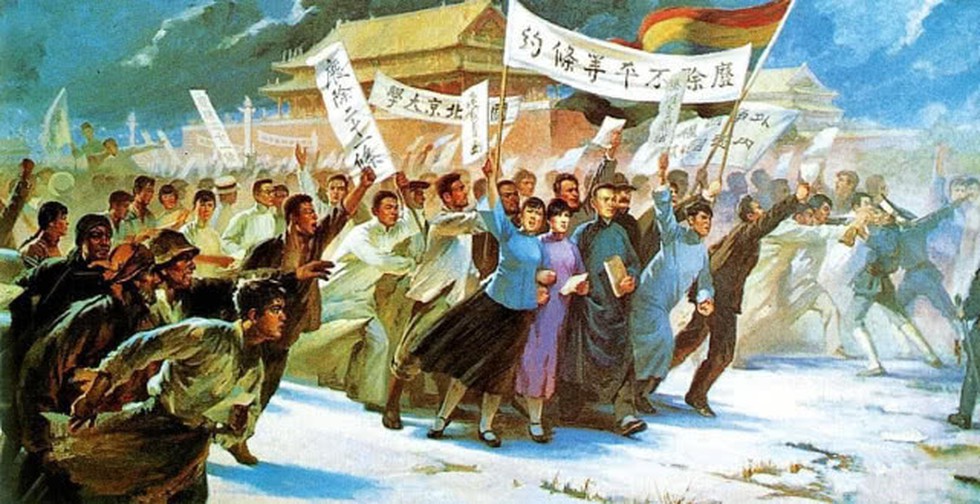
About:
- What was it? The May Fourth Movement was an intellectual and reformist movement that reached its peaked on May 4th 1919, when thousands of students rallied in Beijing to protest against China’s treatment in the Treaty of Versailles. Their protest was supported by students and striking workers across China.
- Trigger for movement:
- The movement was initiated mainly by university students, who were angry at China’s treatment at the hands of Western powers after World War I during the Treaty of Versailles negotiations.
- Specifically, they were outraged by the passing of German imperial interests in Shandong province over to the Japanese (China had allied with the Western powers in the War on the assumption that its coastal province of Shandong, then under German occupation, would be returned to its sovereign control).
- The movement was initiated mainly by university students, who were angry at China’s treatment at the hands of Western powers after World War I during the Treaty of Versailles negotiations.
- Movement objective: The movement was anti-imperialist and demanded the restoration of Chinese independence and sovereignty. Its leaders also wanted socio-political reform, namely the eradication of Confucian values and a society based on democratic government, liberal individualism, science and industry.
- Legacy:
- These events radicalised political movements in China and contributed to the rise of groups like the Chinese Communist Party (CCP), which was formed two years later, that led to the emergence of the People’s Republic of China in 1949.
- Xi Jinping has lauded the May Fourth Movement as an assault on imperialism and feudalism, which had laid the foundation for a socialist revolution.
- These events radicalised political movements in China and contributed to the rise of groups like the Chinese Communist Party (CCP), which was formed two years later, that led to the emergence of the People’s Republic of China in 1949.
Prelims Pointers
April 28, 2019
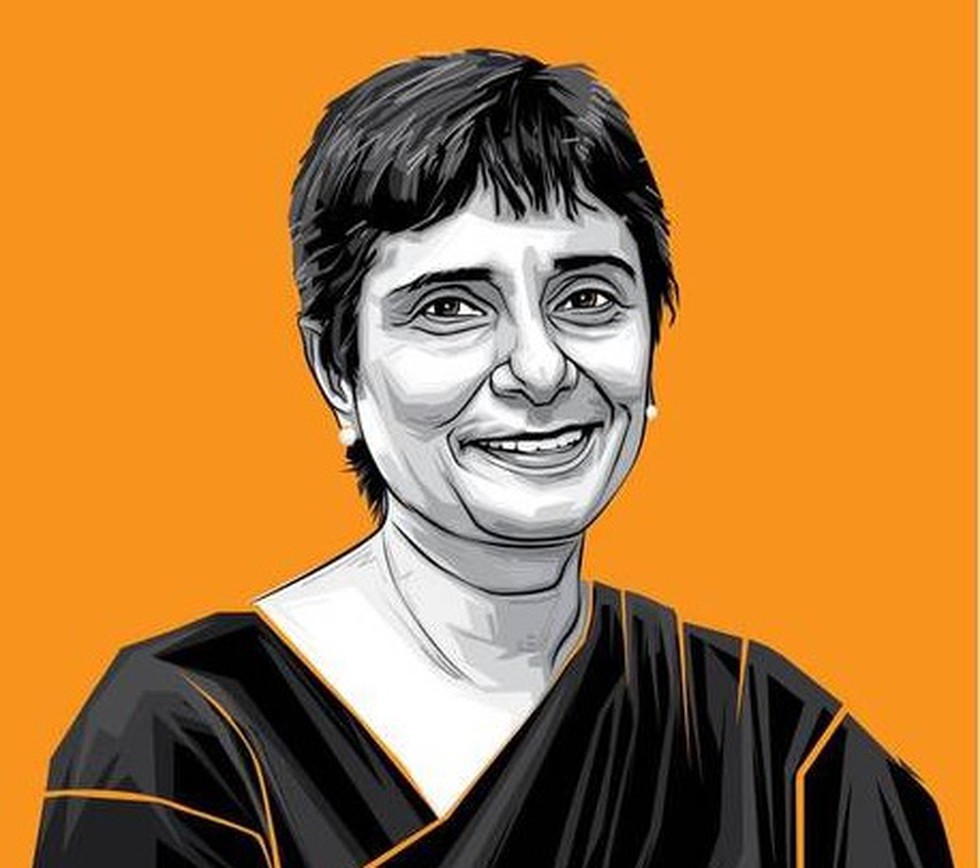
About:
- Gagandeep Kang is a clinician scientist, who is acclaimed for her key role in the development of Rotavac.
- She is currently the executive director of the Translational Health Science and Technology Institute (THSTI), Faridabad, an autonomous institute of the Department of Biotechnology, Ministry of Science and Technology.
- Awards and Honours:
- She was awarded the prestigious Infosys Prize in Life Sciences in 2016 for her contributions to understanding the natural history of rotavirus and other infectious diseases.
- Recently she became the first Indian woman scientist to be elected a Fellow of the Royal Society (FRS).
- She is also the first Indian and the first woman to edit Manson's Textbook of Tropical Medicine.
- She was awarded the prestigious Infosys Prize in Life Sciences in 2016 for her contributions to understanding the natural history of rotavirus and other infectious diseases.
Rotavac?
- Rotavac is India’s first indigenously developed vaccine for rotavirus infections.
- Rotavirus is responsible for childhood diarrhoea.
- The Rotavac has been developed by the Hyderabad-based Bharat Biotech Limited. The Pune-based Serum International also has developed a rotavirus vaccine called Rabishield. Both of them have been included in India’s immunisation programme.
- In January 2018, Rotavac vaccine was “pre-qualified” by the World Health Organisation (WHO). To be “pre-qualified” means that the vaccine can be sold internationally to several countries in Africa and South America.
Prelims Pointers
April 28, 2019
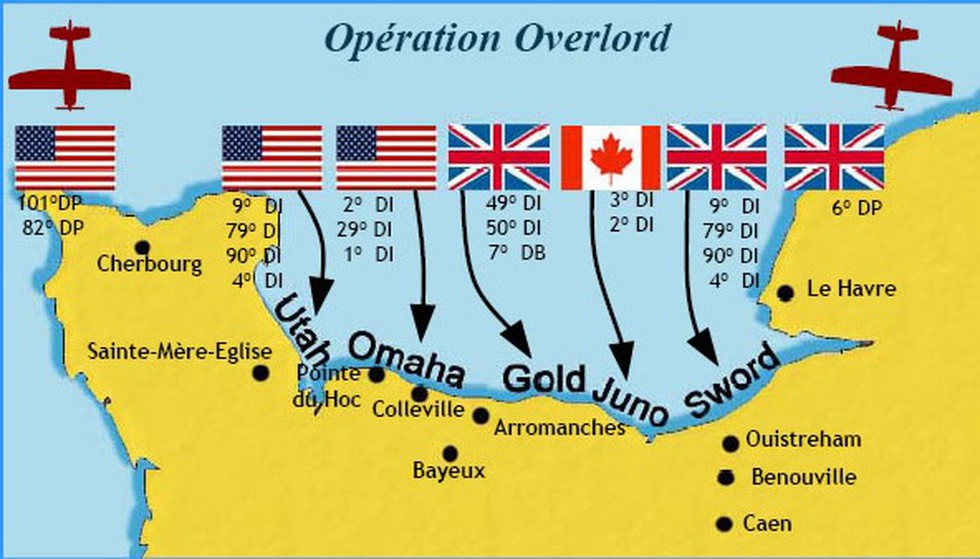
About:
- Operation Overlord was the codename for the Battle of Normandy.
- It was the Allied operation that launched the successful invasion of German-occupied Western Europe during World War II.
- Timeline:
- The decision to undertake a cross-channel invasion in 1944 was taken at the Trident Conference in Washington in May 1943.
- The operation was launched on 6 June 1944 with the Normandy landings (Operation Neptune, commonly known as D-Day).
- The decision to undertake a cross-channel invasion in 1944 was taken at the Trident Conference in Washington in May 1943.
- Battle Summary:
- The coast of Normandy of northwestern France was chosen as the site of the invasion, with the Americans assigned to land at sectors codenamed Utah and Omaha, the British at Sword and Gold, and the Canadians at Juno.
- A 1,200-plane airborne assault preceded an amphibious assault involving more than 5,000 vessels.
- Nearly 160,000 troops crossed the English Channel on 6 June, and more than two million Allied troops were in France by the end of August.
- The coast of Normandy of northwestern France was chosen as the site of the invasion, with the Americans assigned to land at sectors codenamed Utah and Omaha, the British at Sword and Gold, and the Canadians at Juno.
- Aftermath: By the end of August 1944 all of northern France was liberated, and the invading forces reorganized for the drive into Germany, where they would eventually meet with Soviet forces advancing from the east to bring an end to the Nazi Reich.
Prelims Pointers
April 28, 2019

Permafrost:
- Criteria: Permafrost is any ground that remains completely frozen—32°F (0°C) or colder—for at least two years straight.
- Global Distribution: These permanently frozen grounds are most common in regions with high mountains and in Earth’s higher latitudes—near the North and South Poles.
- Coverage: Permafrost covers large regions of the Earth. Almost a quarter of the land area in the Northern Hemisphere has permafrost underneath.
- Composition:
- Permafrost is made of a combination of soil, rocks and sand that are held together by ice. The soil and ice in permafrost stay frozen all year long.
- Near the surface, permafrost soils also contain large quantities of organic carbon—a material leftover from dead plants that couldn’t decompose, or rot away, due to the cold. Lower permafrost layers contain soils made mostly of minerals.
- A layer of soil on top of permafrost does not stay frozen all year. This layer, called the active layer, thaws during the warm summer months and freezes again in the fall.
- Permafrost is made of a combination of soil, rocks and sand that are held together by ice. The soil and ice in permafrost stay frozen all year long.
Impact of Climate Change on Permafrost:
- As Earth’s climate warms, the permafrost is thawing. That means the ice inside the permafrost melts, leaving behind water and soil. Thawing permafrost can have dramatic impacts on our planet.
- Many northern villages are built on permafrost. Thawing permafrost can destroy houses, roads and other infrastructure.
- When permafrost is frozen, plant material in the soil—called organic carbon—can’t decompose, or rot away. As permafrost thaws, microbes begin decomposing this material which releases greenhouse gases the atmosphere.
- When permafrost thaws, so do ancient bacteria and viruses in the ice and soil. These newly-unfrozen microbes could make humans and animals very sick.
Prelims Pointers
April 28, 2019
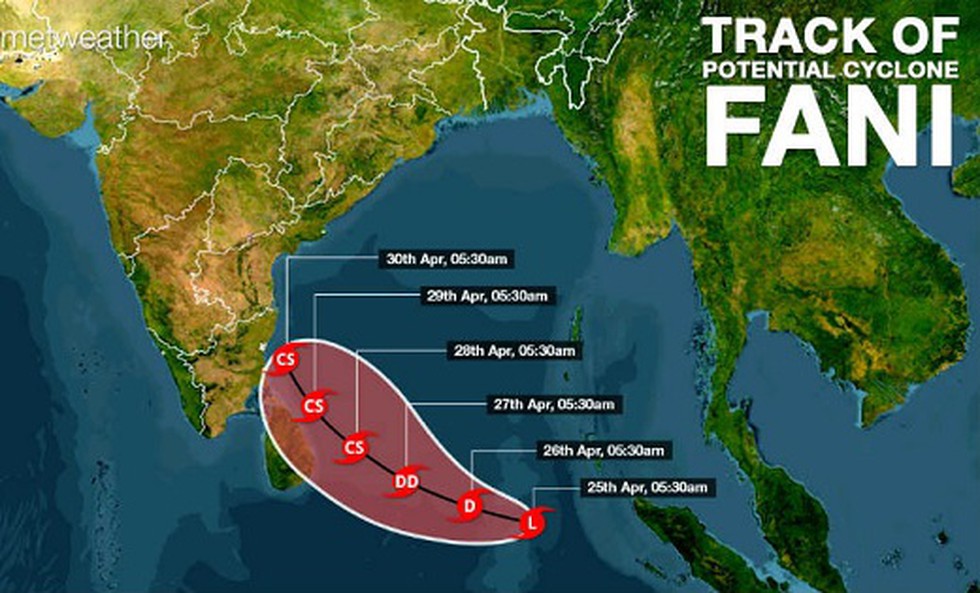
About:
- Worldwide terminology: Cyclones are known as –
- Typhoons in the China Sea and Pacific Ocean;
- Hurricanes in the West Indian islands in the Caribbean Sea and Atlantic Ocean;
- Tornados in the Guinea lands of West Africa and southern USA.;
- Willy-willies in north-western Australia and
- Tropical cyclones in the Indian Ocean.
- Typhoons in the China Sea and Pacific Ocean;
- Cause: Cyclones are caused by atmospheric disturbances around a low-pressure area distinguished by swift and often destructive air circulation.
- Features: Cyclones are usually accompanied by violent storms and bad weather. The air circulates inward in an anticlockwise direction in the Northern hemisphere and clockwise in the Southern hemisphere.
- Classifications: Cyclones are classified as extra tropical cyclones (also called temperate cyclones); and tropical cyclones.
- Tropical cyclones:
- They develop in the regions between the Tropics of Capricorn and Cancer.
- The World Meteorological Organisation (WMO, 1976) uses the term 'Tropical Cyclone’ to cover weather systems in which winds exceed ‘Gale Force’ (minimum of 34 knots or 63 kph).
- These are the result of ocean and atmosphere, powered by the heat from the sea; and driven by easterly trades and temperate westerlies, high planetary winds and their own fierce energy.
- They develop in the regions between the Tropics of Capricorn and Cancer.
- Extra tropical cyclones (temperate cyclones): They occur in temperate zones and high latitude regions, though they are known to originate in the Polar Regions.
National Cyclone Risk Mitigation Project (NCRMP)?
- Project Objectives: To undertake suitable structural and non-structural measures to mitigate the effects of cyclones in the coastal states and UTs of India.
- States covered: The Project has identified 13 cyclone prone States and Union Territories (UTs), with varying levels of vulnerability.
- Categories: These States/UT have further been classified into two categories, based on the frequency of occurrence of cyclone, size of population and the existing institutional mechanism for disaster management. These categories are:
- Category I: Higher vulnerability States i.e. Andhra Pradesh, Gujarat, Odisha, Tamil Nadu and West Bengal.
- Category II: Lower vulnerability States i.e. Maharashtra, Karnataka, Kerala, Goa, Pondicherry, Lakshadweep, Daman and Diu, Andaman and Nicobar Islands.
- Implementation mechanism: National Disaster Management Authority (NDMA) under the aegis of Ministry of Home Affairs(MHA) will implement the Project in coordination with participating State Governments and the National Institute for Disaster Management (NIDM).
- Funding: The project will be funded by the World Bank as an Adaptable Programme Loan (APL).
Prelims Pointers
April 28, 2019
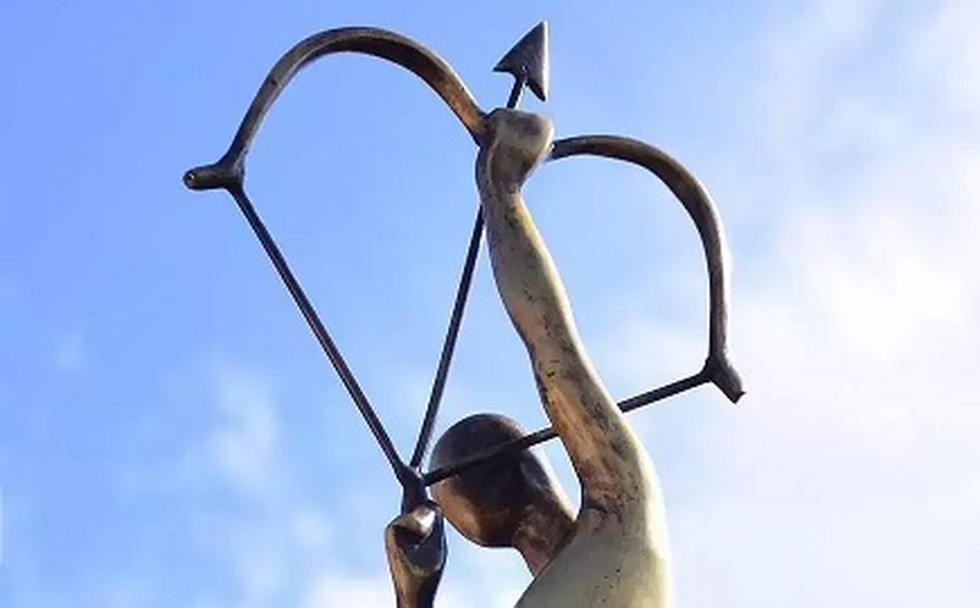
About:
- National Sports Awards are given every year to recognize and reward excellence in sports. One of them is Arjuna Award.
- What are arjuna awards? The objective of the Awards is to recognize outstanding achievements of sportspersons in the field of sports at international level.
- History: It was established in 1961. A total of 53 cricketers have been awarded the Arjuna Award with Saleem Durani, in 1961, the first recipient.
- Given by: The Ministry of Youth Affairs and Sports, Government of India.
- Cash prize: The Award consist of a statuette and a cash Award of Rs. 5 lakh.
- Sports disciplines covered:
- Olympic Games/Asian Games/Commonwealth Games/World Cup/Word Championship disciplines and cricket or any equivalent recognized international Tournament.
- Indigenous Games.
- Sports for physically challenged.
- Olympic Games/Asian Games/Commonwealth Games/World Cup/Word Championship disciplines and cricket or any equivalent recognized international Tournament.
- Eligibility for the Award:
- A sportsperson should have had not only good performance over the previous four years at the International level, but should also have shown qualities of leadership, sportsmanship and a sense of discipline.
- No Award will be made for a second time to the same person.
- The Award may be given posthumously if such an occasion arises.
- A sportsperson should have had not only good performance over the previous four years at the International level, but should also have shown qualities of leadership, sportsmanship and a sense of discipline.
- Number Of Arjuna Awards To Be Given In A Year:
- Ordinarily not more than one award will be given in each discipline in a particular year. But this principle of one award per discipline may be relaxed in case of team sports and across gender.
- At least one award is to be given exclusively for sports for physically challenged.
- Normally not more than 15 awards could be given in any calendar year. However, keeping in view the performance of Indian sportspersons in the Commonwealth, Asian and Olympic Games during a particular year, more than 15 Awards may be allowed.
- Ordinarily not more than one award will be given in each discipline in a particular year. But this principle of one award per discipline may be relaxed in case of team sports and across gender.
Prelims Pointers
April 28, 2019
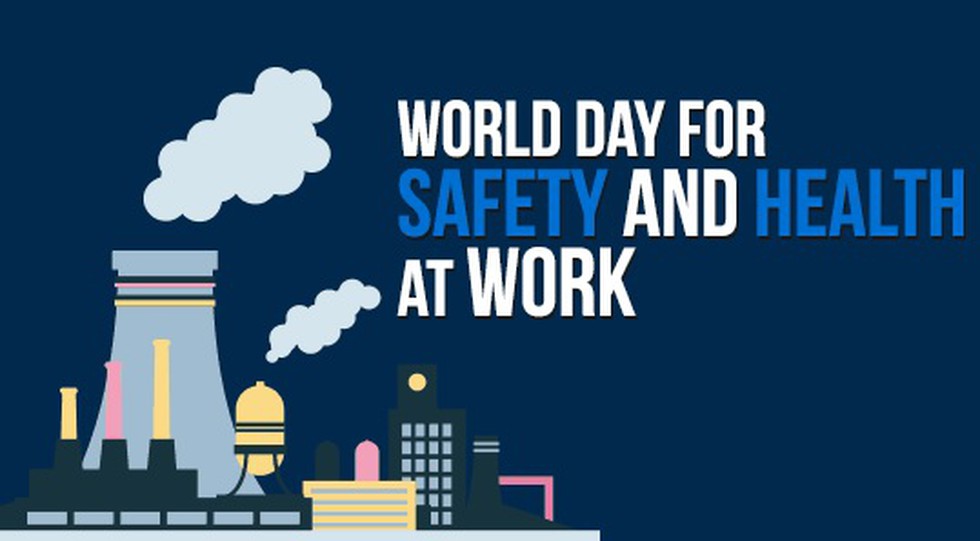
About:
- What is it? The World Day for Safety and Health at Work is an annual international campaign to promote safe, healthy and decent work.
- What is safe, healthy and decent work? to ILO, a national occupational safety and health culture is one where –
- the right to a safe and healthy working environment is respected at all levels,
- governments, employers and workers actively participate in securing a safe and healthy working environment through a system of defined rights, responsibilities and duties, and
- where the highest priority is accorded to the principle of prevention.
- the right to a safe and healthy working environment is respected at all levels,
- Observed on: 28 April (every year). 28 April is also the International Commemoration Day for Dead and Injured Workers organized worldwide by the trade union movement since 1996.
- Observed by: The International Labour Organization (ILO). This celebration is an integral part of the Global Strategy on Occupational Safety and Health of the ILO, as documented in the Conclusions of the International Labour Conference in 2003.
- Observed since: 2003.
April 27, 2019
Prelims Pointers
April 27, 2019
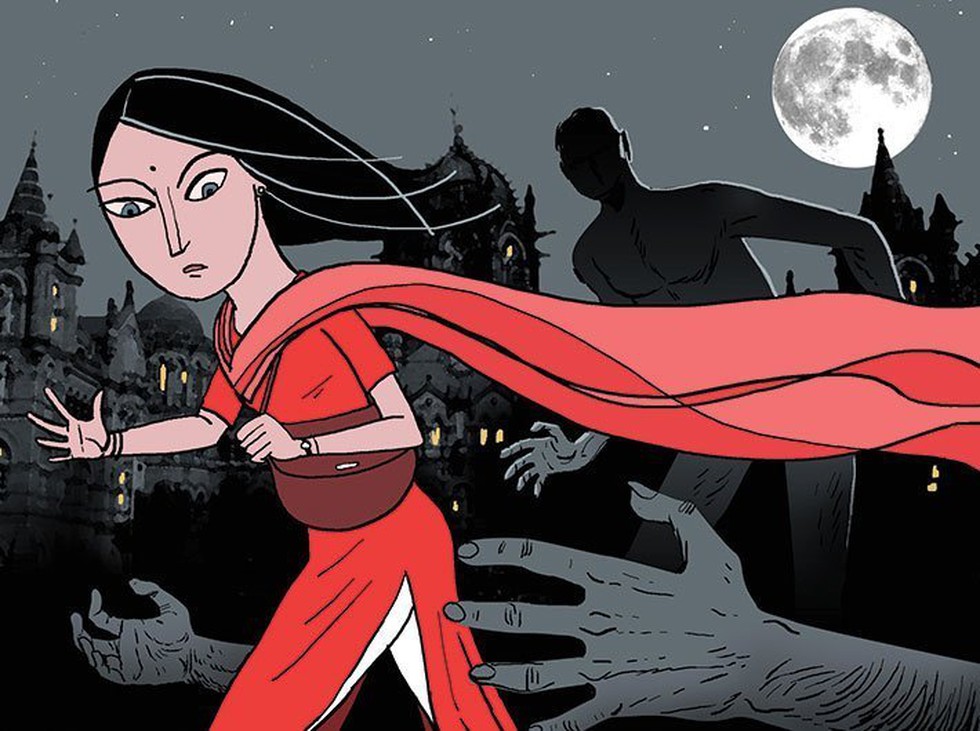
About:
- Project Objective: To strengthening safety and security of women in public places.
- Cities covered: The Ministry of Home Affairs (MHA) is planning to implement it in 8 selected cities, namely, Mumbai, Delhi, Kolkata, Chennai, Bengaluru, Hyderabad, Ahmedabad and Lucknow. In November 2018, Lucknow became the first city to be cleared for the project.
- Parent Scheme: The project has been approved at a total cost of Rs.194.44 crore under the Nirbhaya Fund Scheme.
- Funding: The project, approved at a total cost of Rs.194.44, would be implemented as a Centrally Sponsored Scheme (CSS) with Centre and State sharing the funding in 60:40 ratio.
- Bodies Involved: The projects are being implemented in consultation with Ministry of Women and Child Development, Ministry of Urban Development, Ministry of Information Technology, respective Municipal & Police Commissioners of the cities and civil society organizations.
- The major components of the Safe City project in Lucknow include:
- Setting up Pink Out-posts (exclusively administered by Women police) for facilitating ease of filing complaint by women; Pink Patrols of Women police;
- Augmentation of existing Asha Jyoti Kendra;
- Implementing Safety measures in buses; Improving Street Lighting in Hot Spot areas;
- Setting up Pink Toilets;
- Integration of Women power-help line with single Emergency number ‘112’;
- Gender sensitization awareness campaigns Etc.
- Setting up Pink Out-posts (exclusively administered by Women police) for facilitating ease of filing complaint by women; Pink Patrols of Women police;
Prelims Pointers
April 27, 2019
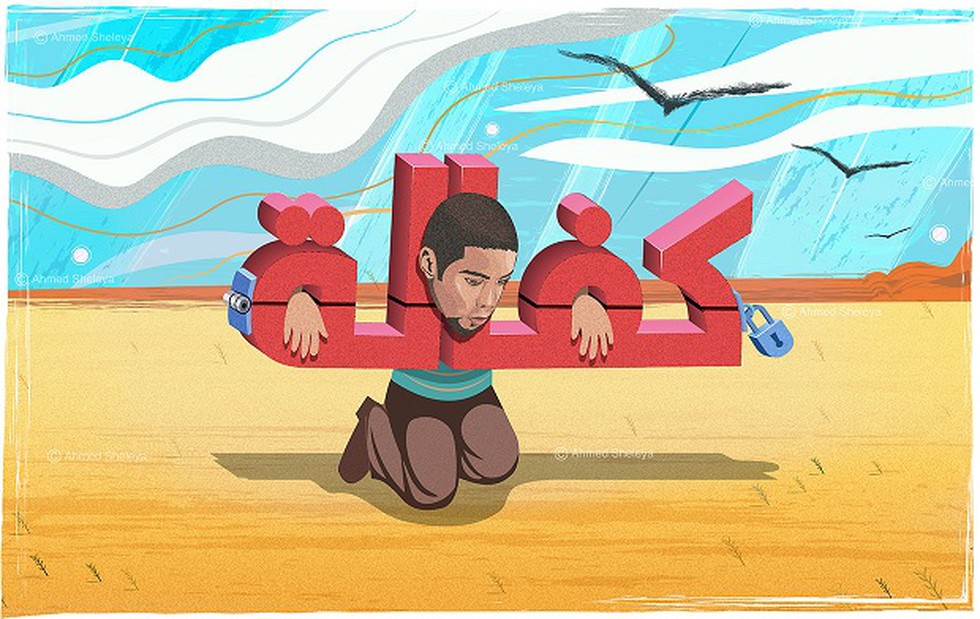
About:
- Background: The Kafala (Sponsorship) System emerged in the 1950’s to regulate the relationship between employers and migrant workers in many countries in West Asia.
- Regions of implementation: It remains the routine practice in the Gulf countries and also in the Arab states of Jordan and Lebanon.
- Reason for introducing it: To provide temporary, rotating labour that could be rapidly brought into the country in economic boom and expelled during less affluent periods, with the event setting in motion a huge construction programme employing foreign workers.
- Features and criticism:
- Under the Kafala system a migrant worker’s immigration status is legally bound to an individual employer or sponsor (kafeel) for their contract period.
- The migrant worker cannot enter the country, transfer employment nor leave the country for any reason without first obtaining explicit written permission from the kafeel.
- Often the kafeel exerts further control over the migrant worker by confiscating their passport and travel documents, despite legislation in some destination countries that declares this practice illegal.
- The power that the Kafala system delegates to the sponsor over the migrant worker, has been likened to a contemporary form of slavery.
- Under the Kafala system a migrant worker’s immigration status is legally bound to an individual employer or sponsor (kafeel) for their contract period.
Prelims Pointers
April 27, 2019
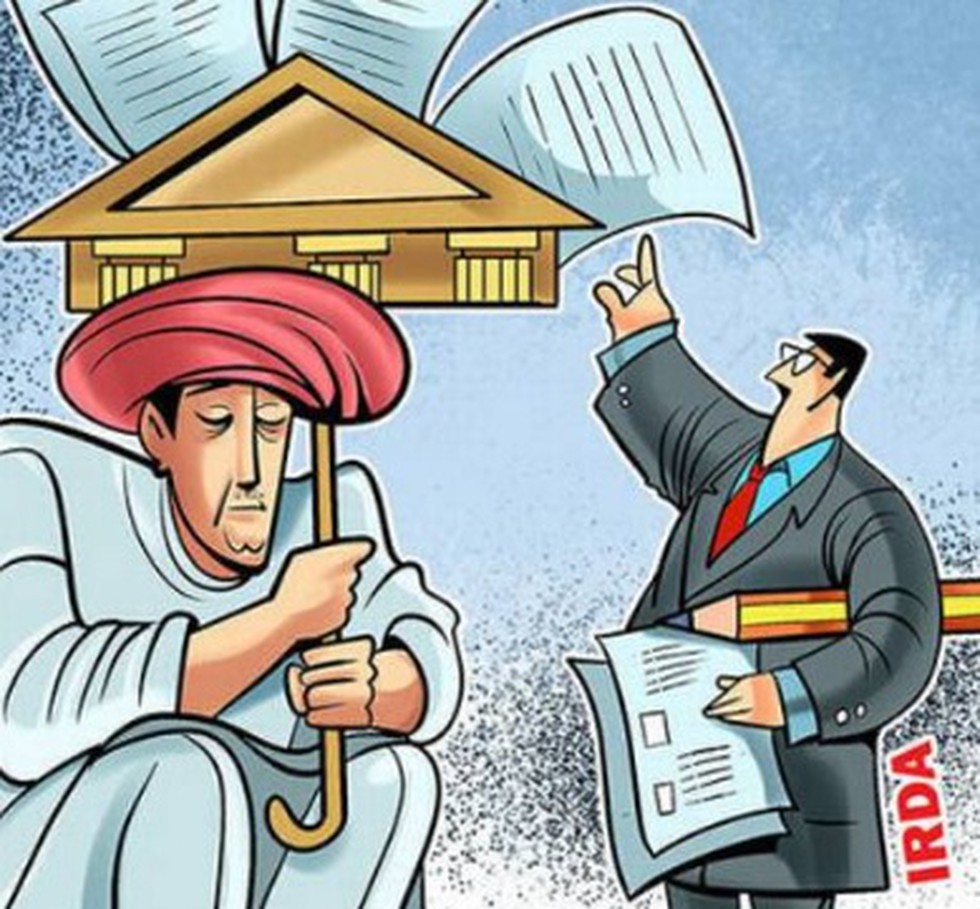
About:
- Composition: The 13-member panel comprising officials of the IRDAI, insurers and NGOs is chaired by IRDAI Executive Director Suresh Mathur.
- Mandate: To review the regulatory framework on microinsurance and recommend measures to increase the demand for such products. It will also suggest changes in the distribution structure, if any, including mobile-based and technology driven solutions.
- Background: The committee has been formed in the backdrop of a less- than-desired offtake of microinsurance products despite their inherent benefits. Its market penetration remains low.
Microinsurance?
- Insurance Regulatory and Development Authority of India (IRDAI) has created a special category of insurance policies called micro-insurance policies to promote insurance coverage among economically vulnerable sections of society.
- The IRDA Micro-insurance Regulations, 2005 defines and enables micro-insurance.
- A micro-insurance policy is a general or life insurance policy with a sum assured of Rs 50,000 or less
- A general micro-insurance product is any: Health insurance contract, Any contract covering belongings such as Hut, Livestock, Tools or instruments or Any personal accident contract. They can be on an individual or group basis.
- A life micro-insurance product is: A term insurance contract with or without return of premium, Any endowment insurance contract or A health insurance contract. They can be with or without an accident benefit rider and Either on an individual or group basis. There is flexibility in the regulations for insurers.
- Micro- insurance business is done through the following intermediaries: Non-Government Organisations and Self-Help Groups.
- Benefits of microinsurance: Specifically intended for the protection of low-income people, with affordable insurance products, microinsurance promises to support sustainable livelihoods of the poor.
Prelims Pointers
April 27, 2019
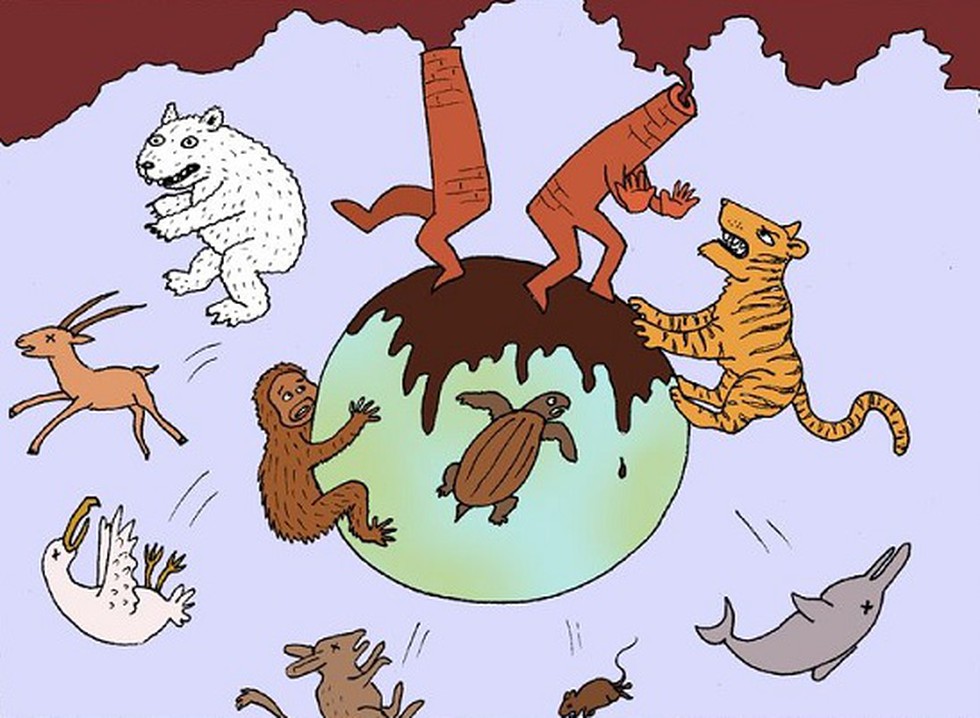
Key Findings of the report:
- Extinction of species: Up to 1 million species are at risk of extinction. A quarter of known plant and animal species are already threatened. The loss of species is tens to hundreds of times higher than it has been, on average, over the last 10 million years.
- Reason for species extinction: The direct causes of species loss, in order of importance, are shrinking habitat and land-use change, hunting for food or illicit trade in wildlife body parts, climate change and pollution.
- Impact on ecosystem: Three-quarters of the land, almost half of marine environments and half of inland waterways have been "severely" changed by human activity. This is primarily due to Human activity, such as overconsumption, illegal poaching, deforestation and fossil fuel emissions, which is pushing ecosystems toward a point of no return.
- Impact of Humans: These changes will harm humans, especially indigenous groups and those living in the poorest communities.
- Way ahead: 130 nations will meet in Paris on April 29 to examine the 44-page report that summarizes a 1,800-page assessment of scientific literature conducted by the U.N.
Prelims Pointers
April 27, 2019
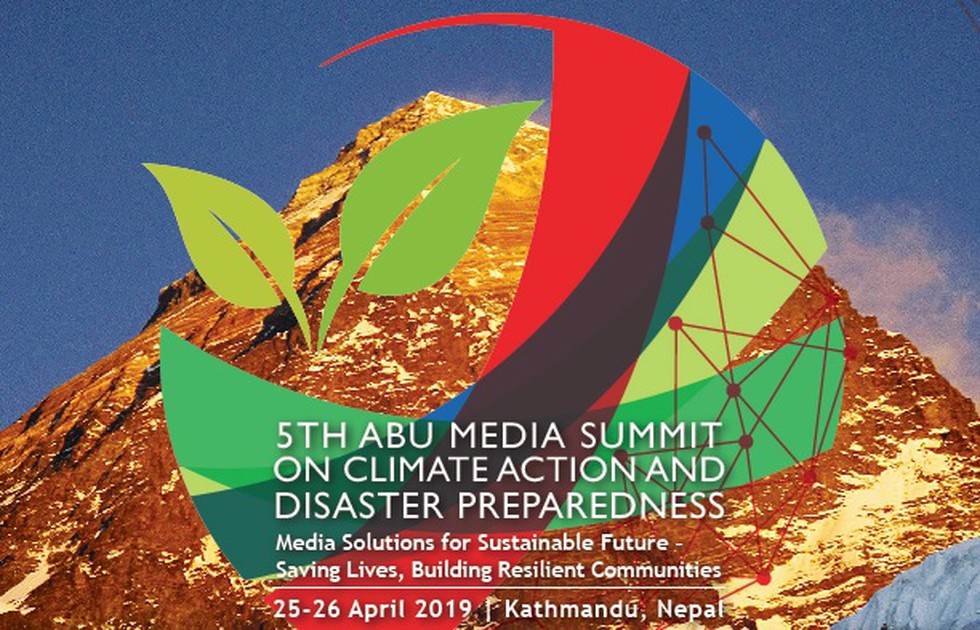
About:
- Objective of the summit: To address the issue of fully utilizing media’s potential of accelerating climate action and disaster preparedness and connect stakeholders to media professionals for collaboration and joint practical projects.
- Venue:
- Theme of the summit: “Media Solutions for Sustainable Future: Saving Lives, Building Resilient Communities”.
- Participation: Over 200 participants including political leaders, representatives of UN agencies and NGOs, climate change and disaster management experts, scientists and media persons are attending the event.
Asia-Pacific Broadcasting Union (ABU)?
- Established in: 1964.
- Status: A non-profit, non-governmental, non- political, professional association.
- Mandate: To assist the development of broadcasting in the region.
- Members: 272 member in 76 countries on four continents.
- ABU Secretariat: Kuala Lumpur, Malaysia.
- ABU is a member of the World Broadcasters’ Union.
Prelims Pointers
April 27, 2019
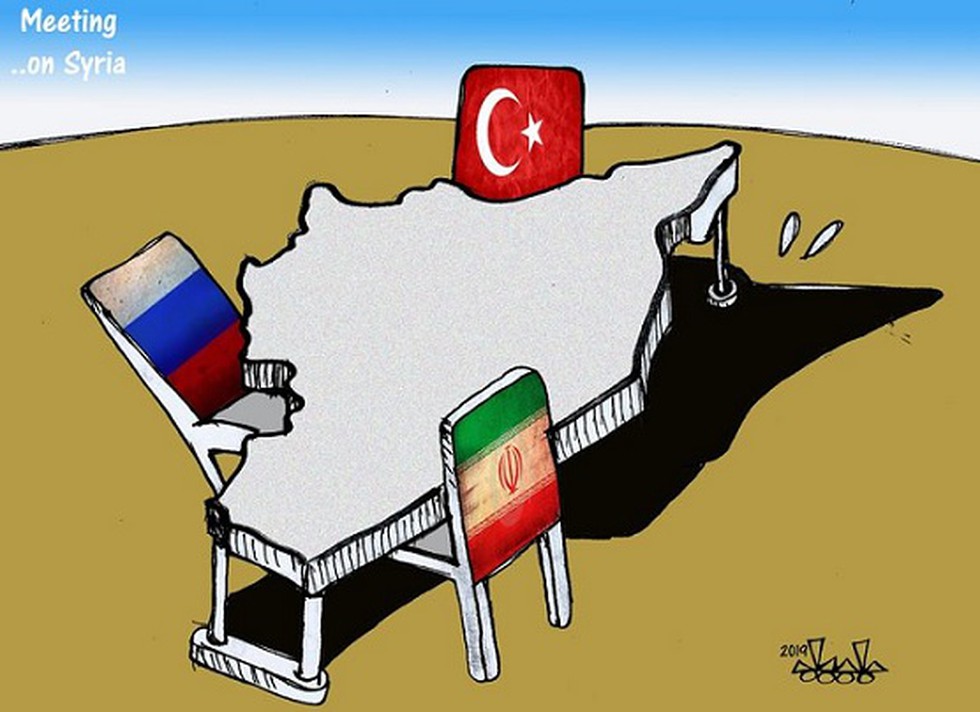
Syria’s Current Constitution:
- The current constitution governing Syrian government territory was adopted in 1973, and was revised by referendum in February 2012.
- Protests began in Syria in 2011 after an uprising in Tunisia forced Tunisia’s dictator into exile and inspired Syrians to rise up against Bashar al-Assad.
- The Syrian government aimed to appease protesters with a constitutional referendum and other reforms in 2012, but the move drew criticism because it took place in the midst of intensifying government violence against protesters. Also the opposition did not see the reforms.
Syrian Peace process: Convening a Committee
- The Syrian peace process consists of a series of summits which produced few to no results.
- They fall into two main categories:
- the U.N. track of negotiations (the “Geneva format”) and
- the parallel Russian-sponsored track (the “Astana format”).
- the U.N. track of negotiations (the “Geneva format”) and
- Geneva format: Kofi Annan’s 2012 Six-Point Plan
- The U.N. negotiations date are organized around the principles of then-U.N. Syria Envoy Kofi Annan’s 2012 “Six-Point Plan.”
- It called for government and rebel forces to stand down immediately, for the appointment of a U.N. interlocutor to resolve the Syrian opposition’s grievances, and to ensure that Syrian citizens could protest peacefully.
- The U.N. Security Council has reaffirmed the priorities of the six-point plan in UNSCR 2254, which continues to guide U.N. Syria policy.
- The U.N. negotiations date are organized around the principles of then-U.N. Syria Envoy Kofi Annan’s 2012 “Six-Point Plan.”
- Astana Format:
- In January 2017, Russia convened its own series of peace talks with Turkish and Iranian support in Astana as an alternative to the U.N.-led process.
- Russia attempted to advance the Astana agenda for a final compromise between Syrian opposition demands and Assad regime priorities at a January 2018 summit in Sochi.
- The plan agreed to at Sochi became the basis for moving ahead on the constitutional matter.
- In January 2017, Russia convened its own series of peace talks with Turkish and Iranian support in Astana as an alternative to the U.N.-led process.
Prelims Pointers
April 27, 2019

About:
- History: The Treaty entered into force in 2014.
- Objective: The Treaty seeks to regulate the international trade in conventional arms (from small arms to battle tanks, combat aircraft and warships).
- What it does?
- It requires member countries to keep records of international transfers of weapons and to prohibit cross-border shipments that can be used in human rights violations or attacks on civilians.
- It establishes common standards for the international trade of conventional weapons and seeks to reduce the illicit arms trade.
- It requires member countries to keep records of international transfers of weapons and to prohibit cross-border shipments that can be used in human rights violations or attacks on civilians.
- What it doesn’t?
- The ATT does not place restrictions on the types or quantities of arms that may be bought, sold, or possessed by states.
- It also does not impact a state’s domestic gun control laws or other firearm ownership policies.
- The ATT does not place restrictions on the types or quantities of arms that may be bought, sold, or possessed by states.
- Present status: While 130 countries originally signed the treaty, only 101 have ratified and joined it. India has not signed the treaty.
- Arguments by Donald Trump:
- He described the treaty as misguided and encroachment on US sovereignty.
- he also that the US Senate never ratified the 2013 Arms Trade Treaty despite his predecessor Barack Obama having endorsed it.
- He described the treaty as misguided and encroachment on US sovereignty.
Prelims Pointers
April 27, 2019
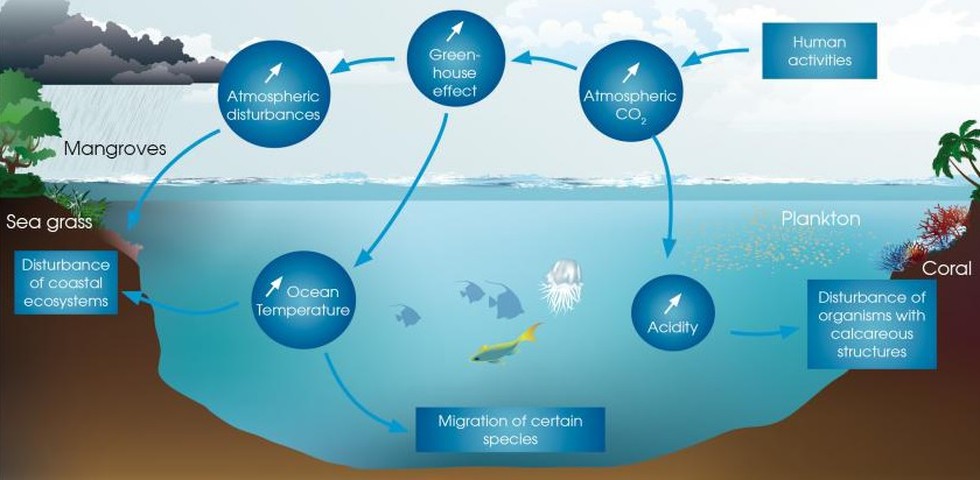
About:
- The research is the first to compare cold-blooded marine and land species' sensitivity to warming and their ability to find refuge from the heat while staying in their normal habitats.
- Key finding: According to the study, global warming hits sea creatures hardest. Ocean-dwelling species are two times more likely to be wiped out due to global warming than life on land.
- Reason: Many land animals can hide from the heat in forests, shaded areas or underground, a luxury not open to many sea animals.
- Impact: The loss of a population can deplete the species' genetic diversity, have cascading impacts on their predators and prey and may significantly impact human communities that rely on fish and shellfish for food and economic activity.
- Way ahead: New conservation efforts will be needed if the ocean is going to continue supporting human well-being, nutrition and economic activity.
Prelims Pointers
April 27, 2019
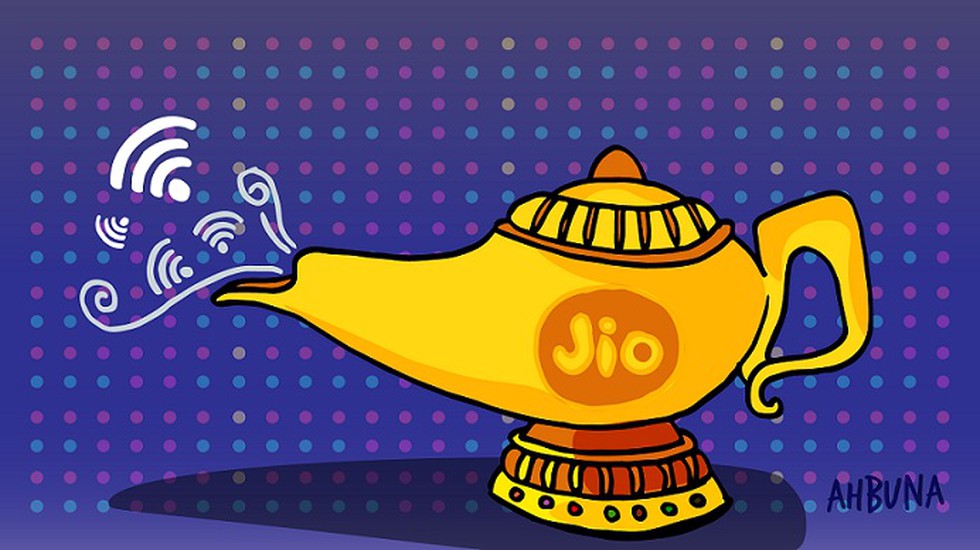
Key Findings:
- Wireless broadband subscriber base in India has surged to 532 million in February 2019. The month of February 2019 witnessed the addition of 10.2 million subscribers.
- Wireless broadband subscriber base amounts to 45 % of the total subscriber base.
- Reliance Jio leads the wireless broadband market, with market share of 56 %, followed by Bharti and Vodafone-Idea at 21 percent each. The growth in subscriber base in February was primarily driven by RJio, which added 7.8 million subscribers.
- Wireless subscriber base in India increased to 1,183.7 million in February 2019, adding 1.7 million subscribers over the previous month. The overall active subscriber base remained at 1,023 million in February.
ICRA Limited (ICRA)?
- What is it? It is an Indian independent and professional investment information and credit rating agency.
- Established in: 1991.
- Ownership: It was a joint-venture between Moody's and various Indian commercial banks and financial services companies. The company changed its name to ICRA Limited, and went public in 2007, with a listing on the Bombay Stock Exchange.
- HQ: Gurugram, Haryana.
Prelims Pointers
April 27, 2019
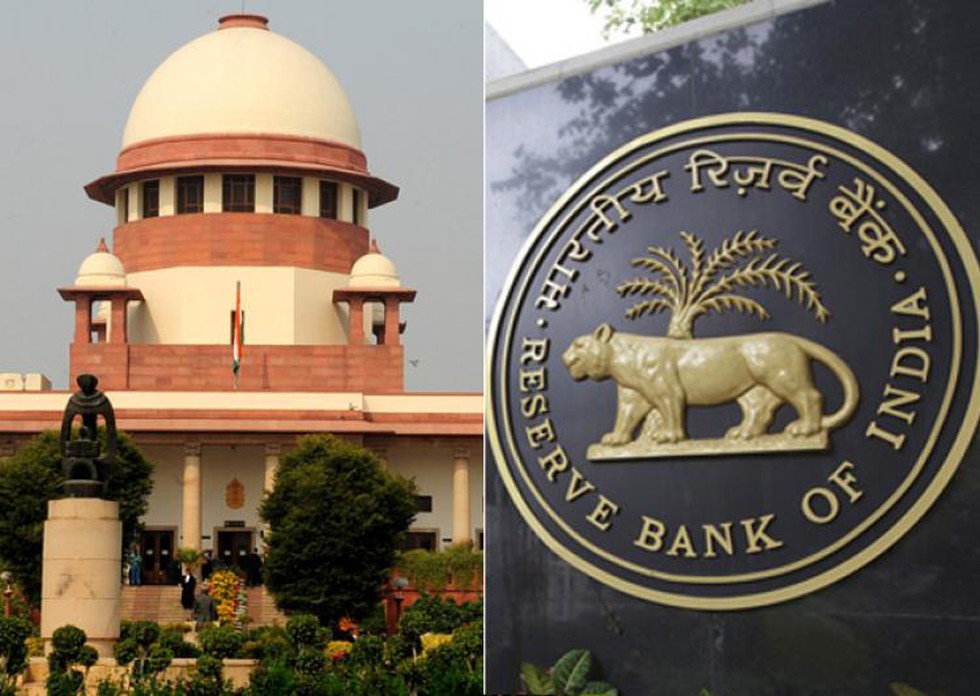
About:
- The Supreme Court gave the RBI “a last opportunity” to withdraw a November 2016 Disclosure Policy which prevents revelation of every other kind of information under the RTI Act, including the list of wilful defaulters and annual inspection reports.
- The bench was hearing a contempt petition filed by RTI activist S C Agrawal against the RBI. It did not go ahead with contempt proceedings against the RBI, made it clear that it was giving a last opportunity to it to comply with provisions of the transparency law.
- Arguments by RBI: The RBI, in its defence, had said that it cannot disclose information as the annual inspection report of the bank contained "fiduciary" information as defined under the transparency law.
Arguments by supreme court sighted in RBI versus Jayantial N. Mistry:
- The 2015 judgment had rejected the RBI’s argument that it could refuse information sought under the RTI on the grounds of economic interest, commercial confidence, fiduciary relationship or public interest.
- The RBI cannot deny information to an information seeker under the transparency law unless the material is exempted from disclosure under the law.
- There was “no fiduciary relationship between the RBI and the financial institutions”.
- RBI had the statutory duty to uphold the interests of the public at large, the depositors, the economy and the banking sector.
- RBI should act with transparency and not hide information that might embarrass the individual banks.
- The court however said some matters of national economic interest like disclosure of information about currency or exchange rates, borrowing and foreign investments could harm the national economy, particularly, if released prematurely.

